Essay vs. Short Story
What's the difference.
Essays and short stories are both forms of written expression, but they differ in their purpose and structure. Essays are typically non-fiction pieces that aim to inform or persuade the reader about a specific topic. They often follow a formal structure with an introduction, body paragraphs, and a conclusion. On the other hand, short stories are fictional narratives that focus on character development and plot. They can be written in various genres and styles, allowing for more creativity and imagination. While essays prioritize facts and logical arguments, short stories prioritize storytelling and evoking emotions in the reader.
| Attribute | Essay | Short Story |
|---|---|---|
| Length | Varies, can be short or long | Short, typically under 20,000 words |
| Structure | Introduction, body paragraphs, conclusion | Usually has a clear beginning, middle, and end |
| Plot | May or may not have a plot | Has a defined plot with conflict and resolution |
| Character Development | May or may not have in-depth character development | Characters are often developed within a limited scope |
| Theme | Explores a specific topic or idea | Focuses on a central theme or message |
| Tone | Varies depending on the purpose and subject matter | Can range from serious to humorous, depending on the story |
| Point of View | Can be written from various perspectives | Usually written from a single point of view |
| Language | Can be formal or informal, depending on the context | Varies, but often uses descriptive and concise language |

Further Detail
Introduction.
When it comes to literary forms, essays and short stories are two popular choices that captivate readers with their unique attributes. While both share the goal of conveying a message or exploring a theme, they differ in various aspects, including structure, length, and narrative techniques. In this article, we will delve into the characteristics of essays and short stories, highlighting their similarities and differences.
One of the primary distinctions between essays and short stories lies in their structure. Essays typically follow a more formal and structured format, often consisting of an introduction, body paragraphs, and a conclusion. The introduction sets the stage by presenting the topic and thesis statement, while the body paragraphs provide supporting evidence and analysis. Finally, the conclusion summarizes the main points and offers a closing thought.
On the other hand, short stories have a more flexible structure. They often begin with an exposition, introducing the characters, setting, and conflict. The plot then unfolds through rising action, climax, and resolution. Unlike essays, short stories allow for more creative freedom in terms of narrative structure, with authors employing various techniques such as flashbacks, foreshadowing, or nonlinear storytelling to engage readers.
Another significant difference between essays and short stories is their length. Essays are typically shorter in length, ranging from a few hundred to a few thousand words. The brevity of essays allows writers to present their ideas concisely and directly, making them suitable for conveying arguments or exploring specific topics in a focused manner.
On the contrary, short stories are longer and more expansive in nature. They can range from a few pages to several dozen pages, providing authors with ample space to develop characters, build suspense, and create intricate plotlines. The extended length of short stories allows for a deeper exploration of themes and emotions, often leaving readers with a more immersive and satisfying reading experience.
Narrative Techniques
While both essays and short stories employ narrative techniques to engage readers, they differ in their approach. Essays primarily rely on logical reasoning, evidence, and analysis to convey their message. Writers use persuasive techniques, such as ethos, pathos, and logos, to appeal to the reader's intellect and emotions. The narrative in essays is often more straightforward and focused on presenting a coherent argument or viewpoint.
In contrast, short stories utilize a wide range of narrative techniques to create a captivating and immersive experience. Authors employ descriptive language, dialogue, and vivid imagery to bring characters and settings to life. They can experiment with different points of view, shifting perspectives, and unreliable narrators to add depth and complexity to the story. The narrative in short stories is often more imaginative and allows for a greater exploration of the human experience.
Themes and Messages
Both essays and short stories aim to convey themes and messages to their readers, but they do so in distinct ways. Essays often focus on presenting an argument or discussing a specific topic, aiming to inform, persuade, or provoke thought. The themes in essays are typically more explicit and directly related to the subject matter being discussed.
On the other hand, short stories explore themes and messages through storytelling and the experiences of characters. They often delve into complex human emotions, moral dilemmas, or societal issues, allowing readers to reflect on the deeper meaning behind the narrative. The themes in short stories are often more implicit, requiring readers to analyze the story's events and characters to uncover the underlying messages.
In conclusion, while essays and short stories share the common goal of conveying a message or exploring a theme, they differ significantly in terms of structure, length, narrative techniques, and the way they approach themes. Essays offer a more formal and structured approach, focusing on presenting arguments and analysis concisely. On the other hand, short stories provide a more immersive and imaginative experience, allowing for the exploration of complex characters, plotlines, and themes. Both forms of writing have their unique merits and appeal, catering to different reading preferences and purposes.
Comparisons may contain inaccurate information about people, places, or facts. Please report any issues.
New Self-Paced Course: "Writing Funny" with Tonight Show writer Simon Taylor! Learn more »

When writers set down the facts of their lives into a compelling story , they’re writing a narrative essay. Personal narrative essays explore the events of the writer’s own life, and by crafting a nonfiction piece that resonates as storytelling, the essayist can uncover deeper truths in the world.
Narrative essays weave the author’s factual lived experiences into a compelling story.
So, what is a narrative essay? Whether you’re writing for college applications or literary journals , this article separates fact from fiction. We’ll look at how to write a narrative essay through a step-by-step process, including a look at narrative essay topics and outlines. We’ll also analyze some successful narrative essay examples.
Learn how to tell your story, your way. Let’s dive into this exciting genre!
What is a Narrative Essay?
The narrative essay is a branch of creative nonfiction . Also known as a personal essay, writers of this genre are tasked with telling honest stories about their lived experiences and, as a result, arriving at certain realizations about life.
Think of personal narrative essays as nonfiction short stories . While the essay and the short story rely on different writing techniques, they arrive at similar outcomes: a powerful story with an idea, theme , or moral that the reader can interpret for themselves.
Now, if you haven’t written a narrative essay before, you might associate the word “essay” with high school English class. Remember those tedious 5-paragraph essays we had to write, on the topic of some book we barely read, about subject matter that didn’t interest us?
Don’t worry—that’s not the kind of essay we’re talking about. The word essay comes from the French essayer , which means “to try.” That’s exactly what writing a narrative essay is: an attempt at organizing the real world into language—a journey of making meaning from the chaos of life.
Narrative essays work to surface meaning from lived experience.
Narrative Essay Example
A great narrative essay example is the piece “Flow” by Mary Oliver, which you can read for free in Google Books .
The essay dwells on, as Mary Oliver puts it, the fact that “we live in paradise.” At once both an ode to nature and an urge to love it fiercely, Oliver explores our place in the endless beauty of the world.
Throughout the essay, Oliver weaves in her thoughts about the world, from nature’s noble beauty to the question “What is the life I should live?” Yet these thoughts, however profound, are not the bulk of the essay. Rather, she arrives at these thoughts via anecdotes and observations: the migration of whales, the strings of fish at high tide, the inventive rescue of a spiny fish from the waterless shore, etc.
What is most profound about this essay, and perhaps most amusing, is that it ends with Oliver’s questions about how to live life. And yet, the stories she tells show us exactly how to live life: with care for the world; with admiration; with tenderness towards all of life and its superb, mysterious, seemingly-random beauty.
Such is the power of the narrative essay. By examining the random facts of our lives, we can come to great conclusions.
What do most essays have in common? Let’s look at the fundamentals of the essay, before diving into more narrative essay examples.
Narrative Essay Definition: 5 Fundamentals
The personal narrative essay has a lot of room for experimentation. We’ll dive into those opportunities in a bit, but no matter the form, most essays share these five fundamentals.
- Personal experience
- Meaning from chaos
- The use of literary devices
Let’s explore these fundamentals in depth.
All narrative essays have a thesis statement. However, this isn’t the formulaic thesis statement you had to write in school: you don’t need to map out your argument with painstaking specificity, you need merely to tell the reader what you’re writing about.
Take the aforementioned essay by Mary Oliver. Her thesis is this: “How can we not know that, already, we live in paradise?”
It’s a simple yet provocative statement. By posing her thesis as a question, she challenges us to consider why we might not treat this earth as paradise. She then delves into her own understanding of this paradise, providing relevant stories and insights as to how the earth should be treated.
Now, be careful with abstract statements like this. Mary Oliver is a master of language, so she’s capable of creating a thesis statement out of an abstract idea and building a beautiful essay. But concrete theses are also welcome: you should compel the reader forward with the central argument of your work, without confusing them or leading them astray.
You should compel the reader forward with the central argument of your work, without confusing them or leading them astray
2. Personal Experience
The personal narrative essay is, shockingly, about personal experience. But how do writers distill their experiences into meaningful stories?
There are a few techniques writers have at their disposal. Perhaps the most common of these techniques is called braiding . Rather than focusing on one continuous story, the writer can “braid” different stories, weaving in and out of different narratives and finding common threads between them. Often, the subject matter of the essay will require more than one anecdote as evidence, and braiding helps the author uphold their thesis while showing instead of telling .
Another important consideration is how you tell your story . Essayists should consider the same techniques that fiction writers use. Give ample consideration to your essay’s setting , word choice , point of view , and dramatic structure . The narrative essay is, after all, a narrative, so tell your story how it deserves to be told.
3. Meaning from Chaos
Life, I think we can agree, is chaotic. While we can trace the events of our lives through cause and effect, A leads to B leads to C, the truth is that so much of our lives are shaped through circumstances beyond our control.
The narrative essay is a way to reclaim some of that control. By distilling the facts of our lives into meaningful narratives, we can uncover deeper truths that we didn’t realize existed.
By distilling the facts of our lives into meaningful narratives, we can uncover deeper truths that we didn’t realize existed.
Consider the essay “ Only Daughter ” by Sandra Cisneros. It’s a brief read, but it covers a lot of different events: a lonesome childhood, countless moves, university education, and the trials and tribulations of a successful writing career.
Coupled with Cisneros’ musings on culture and gender roles, there’s a lot of life to distill in these three pages. Yet Cisneros does so masterfully. By organizing these life events around her thesis statement of being an only daughter, Cisneros finds meaning in the many disparate events she describes.
As you go about writing a narrative essay, you will eventually encounter moments of insight . Insight describes those “aha!” moments in the work—places in which you come to deeper realizations about your life, the lives of others, and the world at large.
Now, insight doesn’t need to be some massive, culture-transforming realization. Many moments of insight are found in small interactions and quiet moments.
For example, In the above essay by Sandra Cisneros, her moments of insight come from connecting her upbringing to her struggle as an only daughter. While her childhood was often lonely and disappointing, she realizes in hindsight that she’s lucky for that upbringing: it helped nurture her spirit as a writer, and it helped her pursue a career in writing. These moments of gratitude work as insight, allowing her to appreciate what once seemed like a burden.
When we reach the end of the essay, and Cisneros describes how she felt when her father read one of her stories, we see what this gratitude is building towards: love and acceptance for the life she chose.
5. Literary Devices
The personal narrative essay, as well as all forms of creative writing, uses its fair share of literary devices . These devices don’t need to be complex: you don’t need a sprawling extended metaphor or an intricate set of juxtapositions to make your essay compelling.
However, the occasional symbol or metaphor will certainly aid your story. In Mary Oliver’s essay “Flow,” the author uses literary devices to describe the magnificence of the ocean, calling it a “cauldron of changing greens and blues” and “the great palace of the earth.” These descriptions reinforce the deep beauty of the earth.
In Sandra Cisneros’ essay “Only Daughter,” the author employs different symbols to represent her father’s masculinity and sense of gender roles. At one point, she lists the few things he reads—sports journals, slasher magazines, and picture paperbacks, often depicting scenes of violence against women. These symbols represent the divide between her father’s gendered thinking and her own literary instincts.
More Narrative Essay Examples
Let’s take a look at a few more narrative essay examples. We’ll dissect each essay based on the five fundamentals listed above.
Narrative Essay Example: “Letting Go” by David Sedaris
Read “Letting Go” here in The New Yorker .
Sedaris’ essay dwells on the culture of cigarette smoking—how it starts, the world it builds, and the difficulties in quitting. Let’s analyze how this narrative essay example uses the five fundamentals of essay writing.
- Thesis: There isn’t an explicitly defined thesis, which is common for essays that are meant to be humorous or entertaining. However, this sentence is a plausible thesis statement: “It wasn’t the smoke but the smell of it that bothered me. In later years, I didn’t care so much, but at the time I found it depressing: the scent of neglect.”
- Personal Experience: Sedaris moves between many different anecdotes about smoking, from his family’s addiction to cigarettes to his own dependence. We learn about his moving around for cheaper smokes, his family’s struggle to quit, and the last cigarette he smoked in the Charles de Gaulle airport.
- Meaning from Chaos: Sedaris ties many disparate events together. We learn about his childhood and his smoking years, but these are interwoven with anecdotes about his family and friends. What emerges is a narrative about the allure of smoking.
- Insight: Two parts of this essay are especially poignant. One, when Sedaris describes his mother’s realization that smoking isn’t sophisticated, and soon quits her habit entirely. Two, when Sedaris is given the diseased lung of a chain smoker, and instead of thinking about his own lungs, he’s simply surprised at how heavy the lung is.
- Literary Devices: Throughout the essay, Sedaris demonstrates how the cigarette symbolizes neglect: neglect of one’s body, one’s space, and one’s self-presentation.
Narrative Essay Example: “My Mother’s Tongue” by Zavi Kang Engles
Read “My Mother’s Tongue” here in The Rumpus .
Engles’ essay examines the dysphoria of growing up between two vastly different cultures and languages. By asserting the close bond between Korean language and culture, Engles explores the absurdities of growing up as a child of Korean immigrants. Let’s analyze how this narrative essay example uses the five fundamentals of essay writing.
- Thesis: Engles’ essay often comes back to her relationship with the Korean language, especially as it relates to other Korean speakers. This relationship is best highlighted when she writes “I glowed with [my mother’s] love, basked in the warm security of what I thought was a language between us. Perhaps this is why strangers asked for our photos, in an attempt to capture a secret world between two people.”This “secret world” forms the crux of her essay, charting not only how Korean-Americans might exist in relation to one another, but also how Engles’ language is strongly tied to her identity and homeland.
- Personal Experience: Engles writes about her childhood attachment to both English and Korean, her adolescent fallout with the Korean language, her experiences as “not American enough” in the United States and “not Korean enough” in Korea, and her experiences mourning in a Korean hospital.
- Meaning from Chaos: In addition to the above events, Engles ties in research about language and identity (also known as code switching ). Through language and identity, the essay charts the two different cultures that the author stands between, highlighting the dissonance between Western individualism and an Eastern sense of belonging.
- Insight: There are many examples of insight throughout this essay as the author explores how out of place she feels, torn between two countries. An especially poignant example comes from Engles’ experience in a Korean hospital, where she writes “I didn’t know how to mourn in this country.”
- Literary Devices: The essay frequently juxtaposes the languages and cultures of Korea and the United States. Additionally, the English language comes to symbolize Western individualism, while the Korean language comes to symbolize Eastern collectivism.
Narrative Essay Example: 3 Rules for Middle-Age Happiness by Deborah Copaken
Read “3 Rules for Middle-Age Happiness” here in The Atlantic .
Copaken’s essay explores her relationship to Nora Ephron, the screenwriter for When Harry Met Sally . Let’s analyze how this narrative essay example uses the five fundamentals of essay writing.
- Thesis: This essay hands us the thesis statement in its subtitle: “Gather friends and feed them, laugh in the face of calamity, and cut out all the things—people, jobs, body parts—that no longer serve you.”
- Personal Experience: Copaken weaves two different threads through this essay. One thread is her personal life, including a failing marriage, medical issues, and her attempts at building a happy family. The other is Copaken’s personal relationship to Ephron, whose advice coincides with many of the essay’s insights.
- Meaning from Chaos: This essay organizes its events chronologically. However, the main sense of organization is found in the title: many of the essayist’s problems can be perceived as middle-aged crises (family trouble, divorce, death of loved ones), but the solutions to those crises are simpler than one might realize.
- Insight: In writing this essay, Copaken explores her relationship to Ephron, as well as Copaken’s own relationship to her children. She ties these experiences together at the end, when she writes “The transmission of woes is a one-way street, from child to mother. A good mother doesn’t burden her children with her pain. She waits until it becomes so heavy, it either breaks her or kills her, whichever comes first.”
- Literary Devices: The literary devices in this article explore the author’s relationship to womanhood. She wonders if having a hysterectomy will make her “like less of a woman.” Also important is the fact that, when the author has her hysterectomy, her daughter has her first period. Copaken uses this to symbolize the passing of womanhood from mother to daughter, which helps bring her to the above insight.
How to Write a Narrative Essay in 5 Steps
No matter the length or subject matter, writing a narrative essay is as easy as these five steps.
1. Generating Narrative Essay Ideas
If you’re not sure what to write about, you’ll want to generate some narrative essay ideas. One way to do this is to look for writing prompts online: Reedsy adds new prompts to their site every week, and we also post writing prompts every Wednesday to our Facebook group .
Taking a step back, it helps to simply think about formative moments in your life. You might a great idea from answering one of these questions:
- When did something alter my worldview, personal philosophy, or political beliefs?
- Who has given me great advice, or helped me lead a better life?
- What moment of adversity did I overcome and grow stronger from?
- What is something that I believe to be very important, that I want other people to value as well?
- What life event of mine do I not yet fully understand?
- What is something I am constantly striving for?
- What is something I’ve taken for granted, but am now grateful for?
Finally, you might be interested in the advice at our article How to Come Up with Story Ideas . The article focuses on fiction writers, but essayists can certainly benefit from these tips as well.
2. Drafting a Narrative Essay Outline
Once you have an idea, you’ll want to flesh it out in a narrative essay outline.
Your outline can be as simple or as complex as you’d like, and it all depends on how long you intend your essay to be. A simple outline can include the following:
- Introduction—usually a relevant anecdote that excites or entices the reader.
- Event 1: What story will I use to uphold my argument?
- Analysis 1: How does this event serve as evidence for my thesis?
- Conclusion: How can I tie these events together? What do they reaffirm about my thesis? And what advice can I then impart on the reader, if any?
One thing that’s missing from this outline is insight. That’s because insight is often unplanned: you realize it as you write it, and the best insight comes naturally to the writer. However, if you already know the insight you plan on sharing, it will fit best within the analysis for your essay, and/or in the essay’s conclusion.
Insight is often unplanned: you realize it as you write it, and the best insight comes naturally to the writer.
Another thing that’s missing from this is research. If you plan on intertwining your essay with research (which many essayists should do!), consider adding that research as its own bullet point under each heading.
For a different, more fiction-oriented approach to outlining, check out our article How to Write a Story Outline .
3. Starting with a Story
Now, let’s tackle the hardest question: how to start a narrative essay?
Most narrative essays begin with a relevant story. You want to draw the reader in right away, offering something that surprises or interests them. And, since the essay is about you and your lived experiences, it makes sense to start your essay with a relevant anecdote.
Think about a story that’s relevant to your thesis, and experiment with ways to tell this story. You can start with a surprising bit of dialogue , an unusual situation you found yourself in, or a beautiful setting. You can also lead your essay with research or advice, but be sure to tie that in with an anecdote quickly, or else your reader might not know where your essay is going.
For examples of this, take a look at any of the narrative essay examples we’ve used in this article.
Theoretically, your thesis statement can go anywhere in the essay. You may have noticed in the previous examples that the thesis statement isn’t always explicit or immediate: sometimes it shows up towards the center of the essay, and sometimes it’s more implied than stated directly.
You can experiment with the placement of your thesis, but if you place your thesis later in the essay, make sure that everything before the thesis is intriguing to the reader. If the reader feels like the essay is directionless or boring, they won’t have a reason to reach your thesis, nor will they understand the argument you’re making.
4. Getting to the Core Truth
With an introduction and a thesis underway, continue writing about your experiences, arguments, and research. Be sure to follow the structure you’ve sketched in your outline, but feel free to deviate from this outline if something more natural occurs to you.
Along the way, you will end up explaining why your experiences matter to the reader. Here is where you can start generating insight. Insight can take the form of many things, but the focus is always to reach a core truth.
Insight might take the following forms:
- Realizations from connecting the different events in your life.
- Advice based on your lived mistakes and experiences.
- Moments where you change your ideas or personal philosophy.
- Richer understandings about life, love, a higher power, the universe, etc.
5. Relentless Editing
With a first draft of your narrative essay written, you can make your essay sparkle in the editing process.
Remember, a first draft doesn’t have to be perfect, it just needs to exist.
Remember, a first draft doesn’t have to be perfect, it just needs to exist. Here are some things to focus on in the editing process:
- Clarity: Does every argument make sense? Do my ideas flow logically? Are my stories clear and easy to follow?
- Structure: Does the procession of ideas make sense? Does everything uphold my thesis? Do my arguments benefit from the way they’re laid out in this essay?
- Style: Do the words flow when I read them? Do I have a good mix of long and short sentences? Have I omitted any needless words ?
- Literary Devices: Do I use devices like similes, metaphors, symbols, or juxtaposition? Do these devices help illustrate my ideas?
- Mechanics: Is every word spelled properly? Do I use the right punctuation? If I’m submitting this essay somewhere, does it follow the formatting guidelines?
Your essay can undergo any number of revisions before it’s ready. Above all, make sure that your narrative essay is easy to follow, every word you use matters, and that you come to a deeper understanding about your own life.
Above all, make sure that your narrative essay is easy to follow, every word you use matters, and that you come to a deeper understanding about your own life.
Next Steps for Narrative Essayists
When you have a completed essay, what’s next? You might be interested in submitting to some literary journals . Here’s 24 literary journals you can submit to—we hope you find a great home for your writing!
If you’re looking for additional feedback on your work, feel free to join our Facebook group . You can also take a look at our upcoming nonfiction courses , where you’ll learn the fundamentals of essay writing and make your story even more compelling.
Writing a narrative essay isn’t easy, but you’ll find that the practice can be very rewarding. You’ll learn about your lived experiences, come to deeper conclusions about your personal philosophies, and perhaps even challenge the way you approach life. So find some paper, choose a topic, and get writing—the world is waiting for your story!
Sean Glatch
Thanks for a superbly efficient and informative article…
We’re glad it was helpful, Mary!
Very helpful,, Thanks!!!
Leave a Comment Cancel Reply
Save my name, email, and website in this browser for the next time I comment.

The Difference between an Essay and a Story
There are several types of essays, and only a narrative essay resembles a story. The traditional length of a narrative essay would be comparable only to a short story in length.

A narrative essay is, in essence, a short version of a personal story from a writer's experience. In some ways, a narrative essay and a short story can feel similar to one another. Both require a certain amount of imaginative narrative from the writer and use descriptive words to convey emotions, lay out the scene, and place the reader inside the events.
However, there are quite a few differences, which is why you won't find a narrative essay in a compilation book of short stories.
Like all other forms of essays, a narrative essay needs a clear outline of ideas that organize the writer's thoughts. Essays will always include an introduction, a body of writing, and a conclusion that sums up the writer's points or describe what the writer learned from the experience they write about.
Short stories need no such structure. While there is technically a beginning, a middle, and an end, the linear structure of a narrative essay is often not followed in a short story. Some jump around in time and play with the reader's imagination to determine the sequence of events and how one event affects or leads to another.
Tell the Truth
One of the most notable differences between a narrative essay and a short story is that a short story does not always have to be true. A story can be fiction or non-fiction, as both fit the definition of a short story. A narrative essay, on the other hand, is expected by the reader to be an actual experience from the writer's life.
The intent of an essay is always to inform, so readers have an expectation that they will learn something by reading an essay regardless of its form. When reading a narrative essay, a reader expects to learn more on the topic being discussed through first-hand knowledge due to the lived experience of the writer.
The intent of a story is to entertain. Some short stories are fables, which include a moral that teaches a lesson. However, even the best lessons in short stories will not come across or even be remembered if the story itself isn't engaging and entertaining.
- Have your assignments done by seasoned writers. 24/7
- Contact us:
- +1 (213) 221-0069
- [email protected]

Can an Essay be a Story? Short, Descriptive or Fictional one
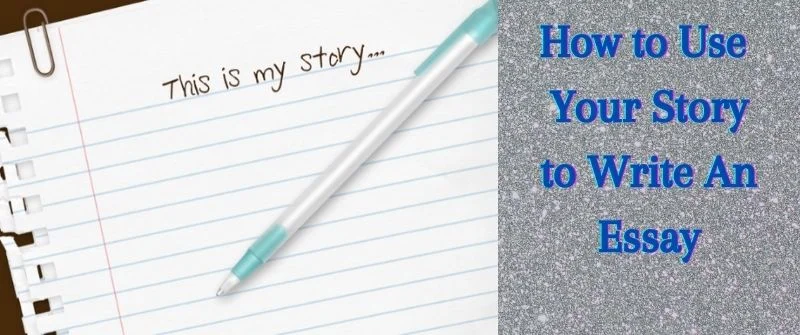
How to Use Your Story to Write An Essay
An essay is a short official writing that focuses mainly on a single subject. A typical academic essay consists of an introduction. This is a summary of what to expect in the essay. It incorporates an argument written as a thesis statement.
An essay also features a middle section that explains in detail the proof and suggestions that convince a reader to concur with the views of the writer.

Lastly, an essay ought to have a clear conclusion summarizing all the findings of the content discussed. A good piece of essay writing focuses on a single idea, flows effortlessly, and has a sensible organization.
Also Read: How to get IXL Answers: Tricks and Hacks How Students Cheat IXL
Can an Essay Be a Story?
Ideally, an essay can be a story if the contents are supposed to be a narration of an event, an experience, or life’s happenings relating to the author or a subject known to the author.
Such an essay can also be a fictional story where the events are not real. However, most essays are narratives or descriptive of things relating to authors.
A story essay or a narrative essay is where a writer has the chance to write about personal experience . The only thing that distinguishes it from other essays is that it follows a proper structure.
Moreover, this type of essay focus on telling a story while an ordinary academic essay has a deep narration of a specific concept, place or object.

When narrating a story to the reader, focus on one particular perspective. The advantage a writer has is the fact that he or she can tell a real story witnessed in life or opt to be fictional.
A good essay story has sensory details that to entertain the reader thus making it easy to understand the story.
If an essay has to be a story, the writer ought to come up with a particular point of view. Support all the claims made in the essay and endeavor to include precise information.
If your essay is a story, make use of good modifiers and vivid verbs.
A dialogue style of writing is encouraged to make it easier for the reader to engage and connect with your writing. In addition, you can add conflicts and sequences to your storytelling.
How to Write a Story as an Essay?
In a story essay, you have the opportunity to share your own story. Because you are giving your own personal experience, the story should be in first person. A typical story essay has an introduction, body and conclusion. The following are outlined elements of the essay:
- The plot which is mainly the incident or event you are going to base your story on. This should feature an order system of proceedings that your story involves.
- The setting of the story is the specific location when the event took place. Typical story settings can include a school, church, house or simply the place where the action took place.
- The characters or people who were involved in your events. In your story, talk about everyone who was involved starting from the main character to the less involved ones.
- There is the element of conflict which reflects the problem the characters in your events faced. If there was a tension in a particular event, this reflects a conflict that your story should resolve.
- The other element of your story is the theme that gives details of the whole purpose of the essay. The theme should also outline the main reason why the writer chose the topic.
1. Introduction
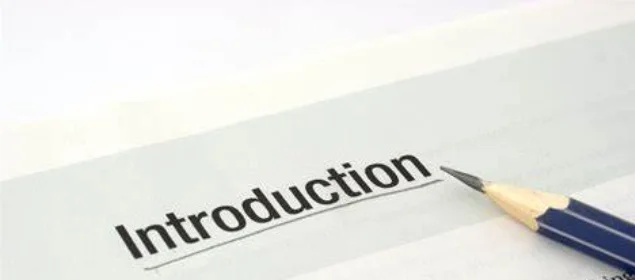
In your story essay, the introduction should tell the main story that will be discussed in the body.
With limited details, let your readers get a glimpse of what to expect. Simply introduce the topic with precise supporting lines and give the thesis statement.
2. Main body
After getting the attention of the readers, they get eager to continue reading the main body which is a decisive phase of storytelling.
Commence your story by unfolding the events that happened gradually. Here, your whole story should be outlined. For easier reading, you can discuss each idea in its own paragraph. Bear in mind that readers find it easy to follow storylines written in logical patterns.
3. A catchy Conclusion
Terminate your story essay with a very strong conclusion. The mood of your conclusion depends on the type of story you were narrating. Ideally, the conclusion should have all the key points summarized. Try to remind the readers the principal message of the story then leave them with a question to ponder about.
Also Read: Do College Essays need Title? Tips how to Write Good Titles
Tips To Make Your Narrative Essay Exciting
A good narrative essay should guide the reader and not sum up everything for him/her. Here are basic ideas to make the writing more exciting:
- Focus on clarity and avoid the use of syntax and complicated words which affect the clarity of your essay.
- Let your writing not be too clinical. As such, the vocabulary and idioms should be the same you can use in a normal speech.
- Without a doubt, a good narrative story is defined by the topic, especially one where the writer will be excited to write about. Create a good title that revolves around special life experiences or real life events that you faced. Events that will entertain the reader and make them laugh are the best.
- Aim to have a passionate impact on your readers. A good narrative essay can be considered exciting if it connects to the person reading it on an emotional level. Even more importantly, narrate a unique story that is going to inflame an empathetic reaction from the reader. This is the only way he or she will be connected to the scene you are describing. Imagery as well as vibrant descriptions makes your audience to have a better picture of the story you are narrating.
- Anecdotes, tales and dialogues cannot be ignored. Include them to give a clear picture of what the characters in the story said.
- Make use of transitional words such as “however” and ‘therefore” so as the connect sentences smoothly.
Dos and DON’Ts of Writing Your Essay Story
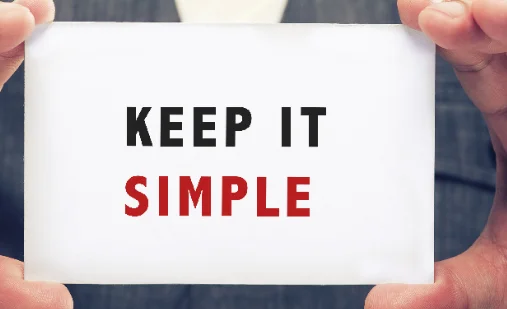
- Make the subject you are writing fun. Since it is not an academic or investigation paper, connect it to your life and have fun writing it.
- As the lead character, write from your own perspective.
- Narrate all events as they occur.
- Be honest and avoid exaggerating events in your story.
- Avoid the use of second person narrative because you experienced the events you are narrating
- Do not include citations when writing a story essay because it becomes disruptive. Simply explain your story and avoid referring your audience to your aforementioned statements.
- Do not go beyond the length limit. In essence, a writer does not have any reason to go beyond the stipulated word count in essay writing.
Also Read: Chegg Plagiarism: Review of Chegg Plagiarism Checker and its Service
What Makes A Narrative Essay Different?
Here are key points that make a narrative essay different:
- The writer is the story teller. You simply tell a story you selected and avoid making an argument.
- They can be derived from fairy tales, jokes, movies and stories.
- They include element of plot, theme, character and conflict.
- A personal narrator style of writing is used.
- A narrative is more imaginative and not rational.
- Unlike short stories, a narrative type of essay is purely non-fictional.
In summary, a narrative essay analyzes a complete story while descriptive and argumentative essays usually entail the description of concepts, specific places or objects. The ultimate purpose of narrative essays is to tell the reader a captivating story.
Unlike in other essays, in narratives imagination is used more than reason. As a student, it is important to study carefully what distinguishes a narrative essay from the other types of essays. In this way, you will have a clear understanding of the purpose of writing.

When not handling complex essays and academic writing tasks, Josh is busy advising students on how to pass assignments. In spare time, he loves playing football or walking with his dog around the park.
Related posts

Titles for Essay about Yourself
Good Titles for Essays about yourself: 31 Personal Essay Topics

How to Write a Diagnostic Essay
How to Write a Diagnostic Essay: Meaning and Topics Example

How Scantron Detects Cheating
Scantron Cheating: How it Detects Cheating and Tricks Students Use

Short Story Analysis Essay
Short story analysis essay generator.
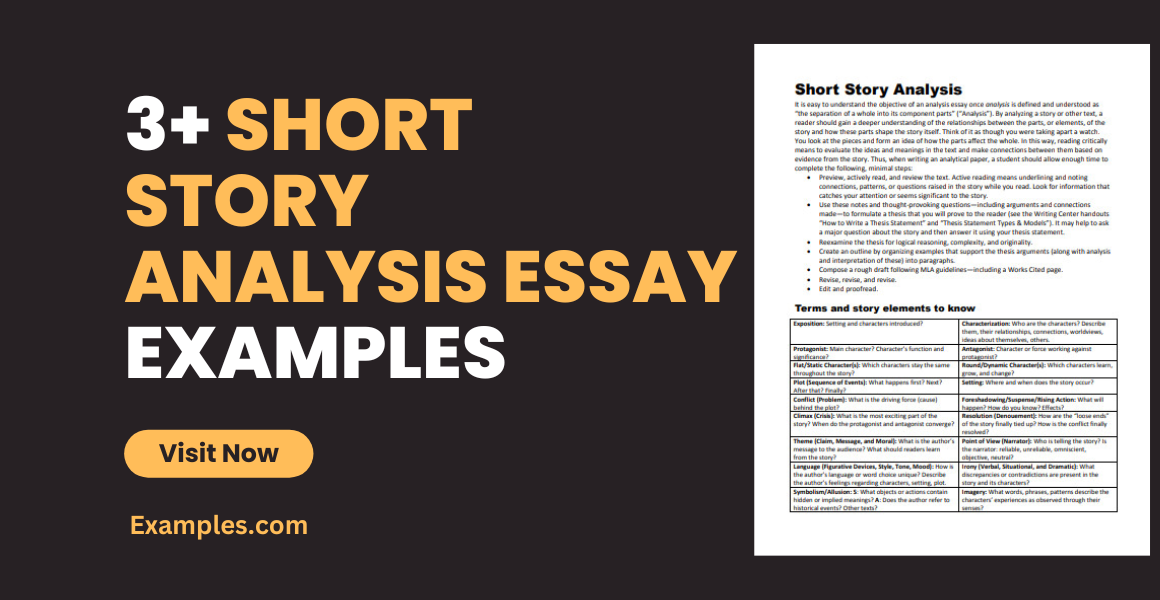
Almost everyone has read a couple of short stories from the time they were kids up until today. Although, depending on how old you are, you analyze the stories you read differently. As a kid, you often point out who is the good guy and the bad guy. You even express your complaints if you do not like the ending. Now, in high school or maybe in college, you pretty much do the same, but you need to incorporate your critical thinking skills and follow appropriate formatting. That said, to present the results of your literature review, compose a short story analysis essay.
3+ Short Story Analysis Essay Examples
1. short story analysis essay template.
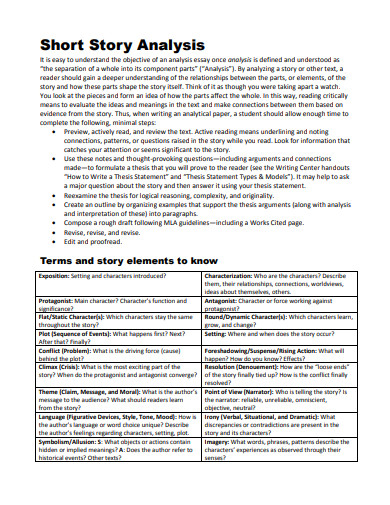
Size: 310 KB
2. Sample Short Story Analysis Essay
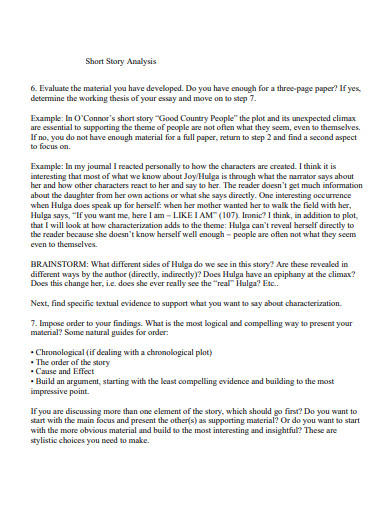
Size: 75 KB
3. Short Story Analysis Essay Example
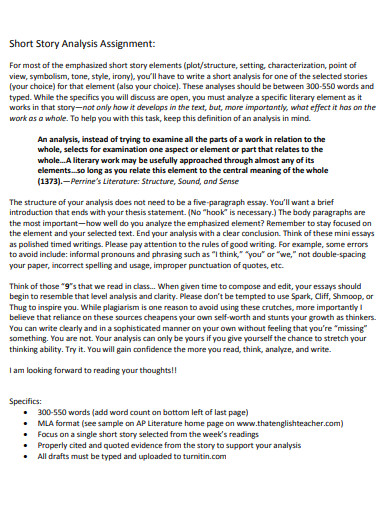
Size: 298 KB
4. Printable Short Story Analysis Essay
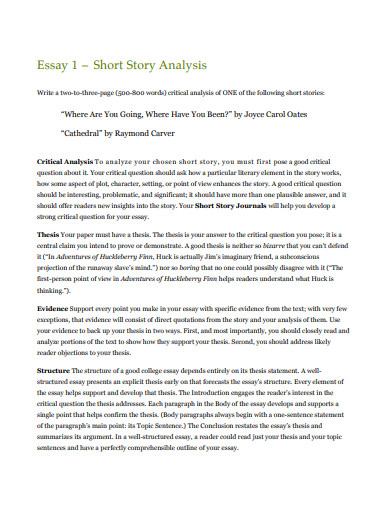
Size: 121 KB
What Is a Short Story Analysis Essay?
A short story analysis essay is a composition that aims to examine the plot and the aspects of the story. In writing this document, the writer needs to take the necessary elements of a short story into account. In addition, one purpose of writing this type of analysis essay is to identify the theme of the story. As well as try to make connections between the different aspects.
How to Compose a Critical Short Story Analysis Essay
Having the assignment to write a short story analysis can be overwhelming. Reading the short story is easy enough. Evaluating and writing down your essay is the challenging part. A short story analysis essay follows a different format from other literature essays . That said, to help with that, here are instructive steps and helpful tips.
1. Take Down Notes
Considering that you have read the short story a couple of times, the first step you should take before writing your essay is to summarize and write down your notes. To help you with this, you can utilize flow charts to determine the arcs the twists of the short story. Include the parts and segments that affected you the most, as well as the ones that hold significance for the whole story.
2. Compose Your Thesis Statement
Before composing your thesis statement for the introductory paragraph of your essay, first, you need to identify the thematic statement of the story. This sentence should present the underlying message of the entire literature. It is where the story revolves around. After that, you can use it as a basis and proceed with composing your thesis statement. It should provide the readers an overview of the content of your analysis paper.
3. Analyze the Concepts
One of the essential segments of your paper is, of course, the analysis part. In the body of your essay, you should present arguments that discuss the concepts that you were able to identify. To support your point, you should provide evidence and quote sentences from the story. If you present strong supporting sentences, it will make your composition more effective. To help with the organization and the structure, you can utilize an analysis paper outline .
4. Craft Your Conclusion
The last part of the process is to craft a conclusion for your essay . Aside from restating the crucial points and the thesis statement, there is another factor that you should consider for the ending paragraph. That said, you should also present your understanding regarding why the author wrote the story that way. In addition, you can also wrap it up by expressing how the story made you feel.
How to run an in-depth analysis of a short story?
In analyzing a short story, you should individually examine the elements of a short story. That said, you need to study the characters, setting, tone, and plot. In addition, you should also consider evaluating the author’s point of view, writing style, and story-telling method. Also, it involves studying how the story affects you personally.
Why is it necessary to compose analysis essays?
Composing analysis essays tests how well a person understands a reading material. It is a good alternative for reading comprehension worksheets . Another advantage of devising this paper is it encourages people to look at a story from different angles and perspectives. In addition to this, it lets the students enhance their article writing potential.
What is critical writing?
Conducting a critical analysis requires an individual to examine the details and facts in the literature closely. It involves breaking down ideas as well as linking them to develop a point or argument. Despite that, the prime purpose of a critical essay is to give a literary criticism of the things the author did well and the things they did poorly.
People enjoy reading short stories. It is for the reason that aside from being brief, they also present meaningful messages and themes. In addition to that, it also brings you to a memorable ride with its entertaining conflicts and plot twists. That said, as a sign of respect to the well-crafted literature, you should present your thoughts about it by generating a well-founded short story analysis essay.
Text prompt
- Instructive
- Professional
Short Story Analysis Essay on the theme of courage in
Short Story Analysis Essay on symbolism in
The Ultimate Narrative Essay Guide for Beginners

A narrative essay tells a story in chronological order, with an introduction that introduces the characters and sets the scene. Then a series of events leads to a climax or turning point, and finally a resolution or reflection on the experience.
Speaking of which, are you in sixes and sevens about narrative essays? Don’t worry this ultimate expert guide will wipe out all your doubts. So let’s get started.
Table of Contents
Everything You Need to Know About Narrative Essay
What is a narrative essay.
When you go through a narrative essay definition, you would know that a narrative essay purpose is to tell a story. It’s all about sharing an experience or event and is different from other types of essays because it’s more focused on how the event made you feel or what you learned from it, rather than just presenting facts or an argument. Let’s explore more details on this interesting write-up and get to know how to write a narrative essay.
Elements of a Narrative Essay
Here’s a breakdown of the key elements of a narrative essay:
A narrative essay has a beginning, middle, and end. It builds up tension and excitement and then wraps things up in a neat package.
Real people, including the writer, often feature in personal narratives. Details of the characters and their thoughts, feelings, and actions can help readers to relate to the tale.
It’s really important to know when and where something happened so we can get a good idea of the context. Going into detail about what it looks like helps the reader to really feel like they’re part of the story.
Conflict or Challenge
A story in a narrative essay usually involves some kind of conflict or challenge that moves the plot along. It could be something inside the character, like a personal battle, or something from outside, like an issue they have to face in the world.
Theme or Message
A narrative essay isn’t just about recounting an event – it’s about showing the impact it had on you and what you took away from it. It’s an opportunity to share your thoughts and feelings about the experience, and how it changed your outlook.
Emotional Impact
The author is trying to make the story they’re telling relatable, engaging, and memorable by using language and storytelling to evoke feelings in whoever’s reading it.
Narrative essays let writers have a blast telling stories about their own lives. It’s an opportunity to share insights and impart wisdom, or just have some fun with the reader. Descriptive language, sensory details, dialogue, and a great narrative voice are all essentials for making the story come alive.
The Purpose of a Narrative Essay
A narrative essay is more than just a story – it’s a way to share a meaningful, engaging, and relatable experience with the reader. Includes:
Sharing Personal Experience
Narrative essays are a great way for writers to share their personal experiences, feelings, thoughts, and reflections. It’s an opportunity to connect with readers and make them feel something.
Entertainment and Engagement
The essay attempts to keep the reader interested by using descriptive language, storytelling elements, and a powerful voice. It attempts to pull them in and make them feel involved by creating suspense, mystery, or an emotional connection.
Conveying a Message or Insight
Narrative essays are more than just a story – they aim to teach you something. They usually have a moral lesson, a new understanding, or a realization about life that the author gained from the experience.
Building Empathy and Understanding
By telling their stories, people can give others insight into different perspectives, feelings, and situations. Sharing these tales can create compassion in the reader and help broaden their knowledge of different life experiences.
Inspiration and Motivation
Stories about personal struggles, successes, and transformations can be really encouraging to people who are going through similar situations. It can provide them with hope and guidance, and let them know that they’re not alone.
Reflecting on Life’s Significance
These essays usually make you think about the importance of certain moments in life or the impact of certain experiences. They make you look deep within yourself and ponder on the things you learned or how you changed because of those events.
Demonstrating Writing Skills
Coming up with a gripping narrative essay takes serious writing chops, like vivid descriptions, powerful language, timing, and organization. It’s an opportunity for writers to show off their story-telling abilities.
Preserving Personal History
Sometimes narrative essays are used to record experiences and special moments that have an emotional resonance. They can be used to preserve individual memories or for future generations to look back on.
Cultural and Societal Exploration
Personal stories can look at cultural or social aspects, giving us an insight into customs, opinions, or social interactions seen through someone’s own experience.
Format of a Narrative Essay
Narrative essays are quite flexible in terms of format, which allows the writer to tell a story in a creative and compelling way. Here’s a quick breakdown of the narrative essay format, along with some examples:
Introduction
Set the scene and introduce the story.
Engage the reader and establish the tone of the narrative.
Hook: Start with a captivating opening line to grab the reader’s attention. For instance:
Example: “The scorching sun beat down on us as we trekked through the desert, our water supply dwindling.”
Background Information: Provide necessary context or background without giving away the entire story.
Example: “It was the summer of 2015 when I embarked on a life-changing journey to…”
Thesis Statement or Narrative Purpose
Present the main idea or the central message of the essay.
Offer a glimpse of what the reader can expect from the narrative.
Thesis Statement: This isn’t as rigid as in other essays but can be a sentence summarizing the essence of the story.
Example: “Little did I know, that seemingly ordinary hike would teach me invaluable lessons about resilience and friendship.”
Body Paragraphs
Present the sequence of events in chronological order.
Develop characters, setting, conflict, and resolution.
Story Progression : Describe events in the order they occurred, focusing on details that evoke emotions and create vivid imagery.
Example : Detail the trek through the desert, the challenges faced, interactions with fellow hikers, and the pivotal moments.
Character Development : Introduce characters and their roles in the story. Show their emotions, thoughts, and actions.
Example : Describe how each character reacted to the dwindling water supply and supported each other through adversity.
Dialogue and Interactions : Use dialogue to bring the story to life and reveal character personalities.
Example : “Sarah handed me her last bottle of water, saying, ‘We’re in this together.'”
Reach the peak of the story, the moment of highest tension or significance.
Turning Point: Highlight the most crucial moment or realization in the narrative.
Example: “As the sun dipped below the horizon and hope seemed lost, a distant sound caught our attention—the rescue team’s helicopters.”
Provide closure to the story.
Reflect on the significance of the experience and its impact.
Reflection : Summarize the key lessons learned or insights gained from the experience.
Example : “That hike taught me the true meaning of resilience and the invaluable support of friendship in challenging times.”
Closing Thought : End with a memorable line that reinforces the narrative’s message or leaves a lasting impression.
Example : “As we boarded the helicopters, I knew this adventure would forever be etched in my heart.”
Example Summary:
Imagine a narrative about surviving a challenging hike through the desert, emphasizing the bonds formed and lessons learned. The narrative essay structure might look like starting with an engaging scene, narrating the hardships faced, showcasing the characters’ resilience, and culminating in a powerful realization about friendship and endurance.
Different Types of Narrative Essays
There are a bunch of different types of narrative essays – each one focuses on different elements of storytelling and has its own purpose. Here’s a breakdown of the narrative essay types and what they mean.
Personal Narrative
Description : Tells a personal story or experience from the writer’s life.
Purpose: Reflects on personal growth, lessons learned, or significant moments.
Example of Narrative Essay Types:
Topic : “The Day I Conquered My Fear of Public Speaking”
Focus: Details the experience, emotions, and eventual triumph over a fear of public speaking during a pivotal event.
Descriptive Narrative
Description : Emphasizes vivid details and sensory imagery.
Purpose : Creates a sensory experience, painting a vivid picture for the reader.
Topic : “A Walk Through the Enchanted Forest”
Focus : Paints a detailed picture of the sights, sounds, smells, and feelings experienced during a walk through a mystical forest.
Autobiographical Narrative
Description: Chronicles significant events or moments from the writer’s life.
Purpose: Provides insights into the writer’s life, experiences, and growth.
Topic: “Lessons from My Childhood: How My Grandmother Shaped Who I Am”
Focus: Explores pivotal moments and lessons learned from interactions with a significant family member.
Experiential Narrative
Description: Relays experiences beyond the writer’s personal life.
Purpose: Shares experiences, travels, or events from a broader perspective.
Topic: “Volunteering in a Remote Village: A Journey of Empathy”
Focus: Chronicles the writer’s volunteering experience, highlighting interactions with a community and personal growth.
Literary Narrative
Description: Incorporates literary elements like symbolism, allegory, or thematic explorations.
Purpose: Uses storytelling for deeper explorations of themes or concepts.
Topic: “The Symbolism of the Red Door: A Journey Through Change”
Focus: Uses a red door as a symbol, exploring its significance in the narrator’s life and the theme of transition.
Historical Narrative
Description: Recounts historical events or periods through a personal lens.
Purpose: Presents history through personal experiences or perspectives.
Topic: “A Grandfather’s Tales: Living Through the Great Depression”
Focus: Shares personal stories from a family member who lived through a historical era, offering insights into that period.
Digital or Multimedia Narrative
Description: Incorporates multimedia elements like images, videos, or audio to tell a story.
Purpose: Explores storytelling through various digital platforms or formats.
Topic: “A Travel Diary: Exploring Europe Through Vlogs”
Focus: Combines video clips, photos, and personal narration to document a travel experience.
How to Choose a Topic for Your Narrative Essay?
Selecting a compelling topic for your narrative essay is crucial as it sets the stage for your storytelling. Choosing a boring topic is one of the narrative essay mistakes to avoid . Here’s a detailed guide on how to choose the right topic:
Reflect on Personal Experiences
- Significant Moments:
Moments that had a profound impact on your life or shaped your perspective.
Example: A moment of triumph, overcoming a fear, a life-changing decision, or an unforgettable experience.
- Emotional Resonance:
Events that evoke strong emotions or feelings.
Example: Joy, fear, sadness, excitement, or moments of realization.
- Lessons Learned:
Experiences that taught you valuable lessons or brought about personal growth.
Example: Challenges that led to personal development, shifts in mindset, or newfound insights.
Explore Unique Perspectives
- Uncommon Experiences:
Unique or unconventional experiences that might captivate the reader’s interest.
Example: Unusual travels, interactions with different cultures, or uncommon hobbies.
- Different Points of View:
Stories from others’ perspectives that impacted you deeply.
Example: A family member’s story, a friend’s experience, or a historical event from a personal lens.
Focus on Specific Themes or Concepts
- Themes or Concepts of Interest:
Themes or ideas you want to explore through storytelling.
Example: Friendship, resilience, identity, cultural diversity, or personal transformation.
- Symbolism or Metaphor:
Using symbols or metaphors as the core of your narrative.
Example: Exploring the symbolism of an object or a place in relation to a broader theme.
Consider Your Audience and Purpose
- Relevance to Your Audience:
Topics that resonate with your audience’s interests or experiences.
Example: Choose a relatable theme or experience that your readers might connect with emotionally.
- Impact or Message:
What message or insight do you want to convey through your story?
Example: Choose a topic that aligns with the message or lesson you aim to impart to your readers.
Brainstorm and Evaluate Ideas
- Free Writing or Mind Mapping:
Process: Write down all potential ideas without filtering. Mind maps or free-writing exercises can help generate diverse ideas.
- Evaluate Feasibility:
The depth of the story, the availability of vivid details, and your personal connection to the topic.
Imagine you’re considering topics for a narrative essay. You reflect on your experiences and decide to explore the topic of “Overcoming Stage Fright: How a School Play Changed My Perspective.” This topic resonates because it involves a significant challenge you faced and the personal growth it brought about.
Narrative Essay Topics
50 easy narrative essay topics.
- Learning to Ride a Bike
- My First Day of School
- A Surprise Birthday Party
- The Day I Got Lost
- Visiting a Haunted House
- An Encounter with a Wild Animal
- My Favorite Childhood Toy
- The Best Vacation I Ever Had
- An Unforgettable Family Gathering
- Conquering a Fear of Heights
- A Special Gift I Received
- Moving to a New City
- The Most Memorable Meal
- Getting Caught in a Rainstorm
- An Act of Kindness I Witnessed
- The First Time I Cooked a Meal
- My Experience with a New Hobby
- The Day I Met My Best Friend
- A Hike in the Mountains
- Learning a New Language
- An Embarrassing Moment
- Dealing with a Bully
- My First Job Interview
- A Sporting Event I Attended
- The Scariest Dream I Had
- Helping a Stranger
- The Joy of Achieving a Goal
- A Road Trip Adventure
- Overcoming a Personal Challenge
- The Significance of a Family Tradition
- An Unusual Pet I Owned
- A Misunderstanding with a Friend
- Exploring an Abandoned Building
- My Favorite Book and Why
- The Impact of a Role Model
- A Cultural Celebration I Participated In
- A Valuable Lesson from a Teacher
- A Trip to the Zoo
- An Unplanned Adventure
- Volunteering Experience
- A Moment of Forgiveness
- A Decision I Regretted
- A Special Talent I Have
- The Importance of Family Traditions
- The Thrill of Performing on Stage
- A Moment of Sudden Inspiration
- The Meaning of Home
- Learning to Play a Musical Instrument
- A Childhood Memory at the Park
- Witnessing a Beautiful Sunset
Narrative Essay Topics for College Students
- Discovering a New Passion
- Overcoming Academic Challenges
- Navigating Cultural Differences
- Embracing Independence: Moving Away from Home
- Exploring Career Aspirations
- Coping with Stress in College
- The Impact of a Mentor in My Life
- Balancing Work and Studies
- Facing a Fear of Public Speaking
- Exploring a Semester Abroad
- The Evolution of My Study Habits
- Volunteering Experience That Changed My Perspective
- The Role of Technology in Education
- Finding Balance: Social Life vs. Academics
- Learning a New Skill Outside the Classroom
- Reflecting on Freshman Year Challenges
- The Joys and Struggles of Group Projects
- My Experience with Internship or Work Placement
- Challenges of Time Management in College
- Redefining Success Beyond Grades
- The Influence of Literature on My Thinking
- The Impact of Social Media on College Life
- Overcoming Procrastination
- Lessons from a Leadership Role
- Exploring Diversity on Campus
- Exploring Passion for Environmental Conservation
- An Eye-Opening Course That Changed My Perspective
- Living with Roommates: Challenges and Lessons
- The Significance of Extracurricular Activities
- The Influence of a Professor on My Academic Journey
- Discussing Mental Health in College
- The Evolution of My Career Goals
- Confronting Personal Biases Through Education
- The Experience of Attending a Conference or Symposium
- Challenges Faced by Non-Native English Speakers in College
- The Impact of Traveling During Breaks
- Exploring Identity: Cultural or Personal
- The Impact of Music or Art on My Life
- Addressing Diversity in the Classroom
- Exploring Entrepreneurial Ambitions
- My Experience with Research Projects
- Overcoming Impostor Syndrome in College
- The Importance of Networking in College
- Finding Resilience During Tough Times
- The Impact of Global Issues on Local Perspectives
- The Influence of Family Expectations on Education
- Lessons from a Part-Time Job
- Exploring the College Sports Culture
- The Role of Technology in Modern Education
- The Journey of Self-Discovery Through Education
Narrative Essay Comparison
Narrative essay vs. descriptive essay.
Here’s our first narrative essay comparison! While both narrative and descriptive essays focus on vividly portraying a subject or an event, they differ in their primary objectives and approaches. Now, let’s delve into the nuances of comparison on narrative essays.
Narrative Essay:
Storytelling: Focuses on narrating a personal experience or event.
Chronological Order: Follows a structured timeline of events to tell a story.
Message or Lesson: Often includes a central message, moral, or lesson learned from the experience.
Engagement: Aims to captivate the reader through a compelling storyline and character development.
First-Person Perspective: Typically narrated from the writer’s point of view, using “I” and expressing personal emotions and thoughts.
Plot Development: Emphasizes a plot with a beginning, middle, climax, and resolution.
Character Development: Focuses on describing characters, their interactions, emotions, and growth.
Conflict or Challenge: Usually involves a central conflict or challenge that drives the narrative forward.
Dialogue: Incorporates conversations to bring characters and their interactions to life.
Reflection: Concludes with reflection or insight gained from the experience.
Descriptive Essay:
Vivid Description: Aims to vividly depict a person, place, object, or event.
Imagery and Details: Focuses on sensory details to create a vivid image in the reader’s mind.
Emotion through Description: Uses descriptive language to evoke emotions and engage the reader’s senses.
Painting a Picture: Creates a sensory-rich description allowing the reader to visualize the subject.
Imagery and Sensory Details: Focuses on providing rich sensory descriptions, using vivid language and adjectives.
Point of Focus: Concentrates on describing a specific subject or scene in detail.
Spatial Organization: Often employs spatial organization to describe from one area or aspect to another.
Objective Observations: Typically avoids the use of personal opinions or emotions; instead, the focus remains on providing a detailed and objective description.
Comparison:
Focus: Narrative essays emphasize storytelling, while descriptive essays focus on vividly describing a subject or scene.
Perspective: Narrative essays are often written from a first-person perspective, while descriptive essays may use a more objective viewpoint.
Purpose: Narrative essays aim to convey a message or lesson through a story, while descriptive essays aim to paint a detailed picture for the reader without necessarily conveying a specific message.
Narrative Essay vs. Argumentative Essay
The narrative essay and the argumentative essay serve distinct purposes and employ different approaches:
Engagement and Emotion: Aims to captivate the reader through a compelling story.
Reflective: Often includes reflection on the significance of the experience or lessons learned.
First-Person Perspective: Typically narrated from the writer’s point of view, sharing personal emotions and thoughts.
Plot Development: Emphasizes a storyline with a beginning, middle, climax, and resolution.
Message or Lesson: Conveys a central message, moral, or insight derived from the experience.
Argumentative Essay:
Persuasion and Argumentation: Aims to persuade the reader to adopt the writer’s viewpoint on a specific topic.
Logical Reasoning: Presents evidence, facts, and reasoning to support a particular argument or stance.
Debate and Counterarguments: Acknowledge opposing views and counter them with evidence and reasoning.
Thesis Statement: Includes a clear thesis statement that outlines the writer’s position on the topic.
Thesis and Evidence: Starts with a strong thesis statement and supports it with factual evidence, statistics, expert opinions, or logical reasoning.
Counterarguments: Addresses opposing viewpoints and provides rebuttals with evidence.
Logical Structure: Follows a logical structure with an introduction, body paragraphs presenting arguments and evidence, and a conclusion reaffirming the thesis.
Formal Language: Uses formal language and avoids personal anecdotes or emotional appeals.
Objective: Argumentative essays focus on presenting a logical argument supported by evidence, while narrative essays prioritize storytelling and personal reflection.
Purpose: Argumentative essays aim to persuade and convince the reader of a particular viewpoint, while narrative essays aim to engage, entertain, and share personal experiences.
Structure: Narrative essays follow a storytelling structure with character development and plot, while argumentative essays follow a more formal, structured approach with logical arguments and evidence.
In essence, while both essays involve writing and presenting information, the narrative essay focuses on sharing a personal experience, whereas the argumentative essay aims to persuade the audience by presenting a well-supported argument.
Narrative Essay vs. Personal Essay
While there can be an overlap between narrative and personal essays, they have distinctive characteristics:
Storytelling: Emphasizes recounting a specific experience or event in a structured narrative form.
Engagement through Story: Aims to engage the reader through a compelling story with characters, plot, and a central theme or message.
Reflective: Often includes reflection on the significance of the experience and the lessons learned.
First-Person Perspective: Typically narrated from the writer’s viewpoint, expressing personal emotions and thoughts.
Plot Development: Focuses on developing a storyline with a clear beginning, middle, climax, and resolution.
Character Development: Includes descriptions of characters, their interactions, emotions, and growth.
Central Message: Conveys a central message, moral, or insight derived from the experience.
Personal Essay:
Exploration of Ideas or Themes: Explores personal ideas, opinions, or reflections on a particular topic or subject.
Expression of Thoughts and Opinions: Expresses the writer’s thoughts, feelings, and perspectives on a specific subject matter.
Reflection and Introspection: Often involves self-reflection and introspection on personal experiences, beliefs, or values.
Varied Structure and Content: Can encompass various forms, including memoirs, personal anecdotes, or reflections on life experiences.
Flexibility in Structure: Allows for diverse structures and forms based on the writer’s intent, which could be narrative-like or more reflective.
Theme-Centric Writing: Focuses on exploring a central theme or idea, with personal anecdotes or experiences supporting and illustrating the theme.
Expressive Language: Utilizes descriptive and expressive language to convey personal perspectives, emotions, and opinions.
Focus: Narrative essays primarily focus on storytelling through a structured narrative, while personal essays encompass a broader range of personal expression, which can include storytelling but isn’t limited to it.
Structure: Narrative essays have a more structured plot development with characters and a clear sequence of events, while personal essays might adopt various structures, focusing more on personal reflection, ideas, or themes.
Intent: While both involve personal experiences, narrative essays emphasize telling a story with a message or lesson learned, while personal essays aim to explore personal thoughts, feelings, or opinions on a broader range of topics or themes.

A narrative essay is more than just telling a story. It’s also meant to engage the reader, get them thinking, and leave a lasting impact. Whether it’s to amuse, motivate, teach, or reflect, these essays are a great way to communicate with your audience. This interesting narrative essay guide was all about letting you understand the narrative essay, its importance, and how can you write one.
Order Original Papers & Essays
Your First Custom Paper Sample is on Us!
Timely Deliveries
No Plagiarism & AI
100% Refund
Try Our Free Paper Writing Service
Related blogs.

Connections with Writers and support
Privacy and Confidentiality Guarantee
Average Quality Score
Columns > Published on June 6th, 2024
How to Write a Short Story in 9 Simple Steps
The joy of writing short stories is, in many ways, intertwined with its limitations. Developing characters, conflict, and a premise within a few pages is a thrilling challenge that many writers relish — even after they've "graduated" to long-form fiction.
In this article, I’ll take you through the process of writing a short story, from conception to the final draft. But first, let’s talk about what makes a short story different from a novel.
What is a short story?
A short story is a brief fictional piece that usually revolves around a dramatic episode or epiphany, which aims to evoke a single powerful emotion or insight. Compared to novels , short stories typically feature:
Fewer characters;
A single point of view;
One main storyline without subplots;
And minimal backstory or exposition.
While novels typically average around 80,000 words, short stories are significantly more concise.

How long should a short story be?
The simple answer to this question, of course, is that the short story is shorter than the novel, usually coming in between 1,000-10,000 words. Any shorter and you’re into flash fiction territory. Any longer and you’re approaching novella length .
But don't let the brevity fool you. In the hands of a skilled wordsmith, short stories can still feature immersive worlds, nuanced characters, and interesting narrative arcs. Like novels, they can (and should) contain the basic ingredients of storytelling…
What are the elements of a short story?
Short stories should include the elements that make a narrative compelling: a solid plot structure, an interesting character arc, a central theme or message, and more. Let’s look at some of them:
🧑🦱 Character: A protagonist with interesting goals and desires is essential to your story. Whether they’re an insecure teenager grappling with their parents' divorce or a bold hero trying to retrieve a treasure from another planet, make sure that your character’s unique personality and motives draw readers in.
🥊 Conflict: A story is all about how characters overcome inner and outer obstacles, and watching how they evolve as they face these challenges. If your protagonist achieves their goal quickly and easily, there’s no story. So make sure your protagonist faces a dark night of the soul or intergalactic villain before they get what they’re looking for.
🕸️ Plot: A story is typically built around several plot points: the inciting incident where your character starts pursuing their goal, the rising action (and conflict) that follows, leading up to the climax and resolution. While short stories usually have fewer plot points, they still need a solid beginning, middle, and end to feel complete.
🏙️ Setting: Is your story placed in 1950s downtown Manhattan or on a futuristic planet? The setting is the physical, historical, and social backdrop of your narrative. In short stories, setting often takes a backseat to action, but it's still important and should be described as vividly as possible.
🤔 Theme: The theme is the central idea or message of the story, often beginning with a question (e.g., How might a teenager grieve the separation of their parents?). Your story can either provide an answer or leave the question open for further reflection, but it should add to the conversation around a social theme or explore some aspect of the human condition.
How to write a short story
Now that we've identified some key ingredients, let's see how to combine them together to craft a compelling narrative. Here are eight steps you can follow:
1. Pick a simple central premise
A short story can begin life in all sorts of ways.
It may be suggested by a simple but powerful image that imprints itself on the mind. It may derive from a particular character type — someone you know, perhaps — that you’re keen to understand and explore. It may arise out of a memorable incident in your own life.
But in most of these cases, it seems to me, the first heartbeat (the “throb,” as Vladimir Nabokov puts it) of a new story is similar: it’s a brief “capsule” premise that contains within itself the germ of a more complex and sophisticated narrative.
For example:
Kafka began “The Metamorphosis” with the intuition that a premise about someone transforming into a giant insect would allow him to explore questions about human relationships and the human condition.
Herman Melville’s “Bartleby the Scrivener” takes the basic idea of a lowly clerk who decides he will no longer do anything he doesn’t personally wish to do, and turns it into a multi-layered tale capable of a variety of interpretations.
When I look back on some of my own short stories, I find a similar dynamic at work: a simple originating idea slowly expands to become something more nuanced and less formulaic.
So how do you find this “throb” of your own short story? Here are several ways to do so.
Experiment with writing prompts
Eagle-eyed readers will notice that the story premises mentioned above actually have a great deal in common with writing prompts, like the ones put forward each week in Reedsy’s short story competition . Try it out! These prompts are designed to narrow the focus for the writer so that one isn’t confronted with a completely blank canvas.
Turn to the originals
Take a story or novel you admire and think about how you might rework it, changing a key element. (“Pride and Prejudice and Zombies” is perhaps an extreme product of this exercise.) It doesn’t matter that your proposed reworking will probably never amount to more than a skimpy mental reimagining — it may well produce collateral narrative possibilities along the way.
Keep a notebook
Finally, keep a notebook in which to jot down stray observations and story ideas whenever they occur. Again, most of what you write will be ideas you never return to, and it may even fail to make sense when you reread it. But lurking among the dross may be that one rough diamond that makes all the rest worthwhile.
2. Build a small but distinctive cast of characters
As I mentioned earlier, short stories usually contain far fewer characters than novels. Readers also need to know far less about the characters in a short story than we do in a novel. Indeed, sometimes it’s the lack of information about a particular character in a story that adds to the mystery surrounding them, making them more compelling.
Yet it remains the case that creating memorable characters should be one of your principal goals. Think of your own family, friends and colleagues. Do you ever get them confused with one another? Probably not.
Your dramatis personae should be just as easily distinguishable from one another, either through their appearance, behavior, speech patterns, or other unique traits. If you find yourself struggling, a character profile template may be particularly helpful in this stage of writing.
“The Yellow Wallpaper” by Charlotte Perkins Gilman features a cast of two: the narrator and her husband. How does Gilman give her narrator uniquely identifying features?
“The Tell-Tale Heart” by Edgar Allan Poe features a cast of three: the narrator, the old man, and the police. How does Poe use speech patterns in dialogue and within the text to convey important information about the narrator?
“A Good Man Is Hard to Find” by Flannery O’Connor is perhaps an exception: its cast of characters amounts to a whopping (for a short story) nine. How does she introduce each character? In what way does she make each character, especially The Misfit, distinct?
3. Begin writing close to the end
It was Kurt Vonnegut who said you should start as close to the story end as possible.
He’s right: avoid the preliminary exposition or extended scene-setting. Begin your story by plunging straight into the heart of the action. What most readers want from a story is drama and conflict, and this is often best achieved by beginning in media res. You have no time to waste in a short story. The first sentence of your story is crucial, and needs to grab the reader’s attention to make them want to read on.
One way to do this is to write an opening sentence that makes the reader ask questions. For example, Kingsley Amis once said, tongue-in-cheek, that in the future he would only read novels that began with the words: “A shot rang out.”
This simple sentence is actually quite telling. It introduces the stakes: there’s an immediate element of physical danger, and therefore jeopardy for someone. But it also raises questions that the reader will want answered. Who fired the shot? Who or what were they aiming at, and why? Where is this happening?
We read fiction, for the most part, to get answers to questions. For example, if you begin your story with a character who behaves in an unexpected way, the reader will want to know why he or she is behaving like this. What motivates their unusual behavior? Do they know that what they’re doing or saying is odd? Do they perhaps have something to hide? Can we trust this character?
As the author, you can answer these questions later (that is, answer them dramatically rather than through exposition). But since we’re speaking of the beginning of a story, at the moment it’s enough simply to deliver an opening sentence that piques the reader’s curiosity, raises questions, and keeps them reading.
4. Shut out your internal editor
“Anything goes” should be your maxim when embarking on your first draft.
By that, I mean: kill the editor in your head and give your imagination free rein. Remember, you’re beginning with a blank page. Anything you put down will improve what’s currently there, which is nothing. And there’s a prescription for any obstacle you might encounter at this stage of writing:
Worried that you’re overwriting? Don’t worry. It’s easier to cut material in later drafts once you’ve sketched out the whole story.
Got stuck, but know what happens later? Leave a gap. There’s no need to write the story sequentially. You can always come back and fill in the gap once the rest of the story is complete.
Have a half-developed scene that’s hard for you to get onto the page? Write it in note form for the time being. You might find that it relieves the pressure of having to write in complete sentences from the get-go.
Most of my stories began with no idea of their eventual destination, but merely an approximate direction of travel. To put it another way, I’m a ‘pantser’ (flying by the seat of my pants, making it up as I go along) rather than a planner. There is, of course, no “correct” way to write your first draft. What matters is that you have a first draft on your hands at the end of the day.
5. Finish the first draft
It’s hard to overstate the importance of the ending of a short story : it can rescue an inferior story or ruin an otherwise superior one.
If you’re a planner, you will already know the broad outlines of the ending. If you’re a pantser like me, you won’t — though you’ll hope that a number of possible endings will have occurred to you in the course of writing and rewriting the story!
In both cases, keep in mind that what you’re after is an ending that’s true to the internal logic of the story without being obvious or predictable. What you want to avoid is an ending that evokes one of two reactions:
“Is that it?” i.e. “The author has failed to resolve the questions raised by the story.”
“WTF!” i.e. “This ending is simply confusing.”
6. Edit the short story
Like Truman Capote said, “Good writing is rewriting.”
Once you have a first draft, that’s when the real work begins. This is the stage where you move things around, tightening the nuts and bolts to make sure the piece holds together and resembles the shape it took in your mind when you first conceived it.
In most cases, this means reading through your first draft again (and again). In this phase of editing , think to yourself:
Which narrative threads are already in place?
Which may need to be added or developed further?
Which need to perhaps be eliminated altogether?
All that’s left afterward is the final polish . Here’s where you interrogate every word, every sentence, to make sure it’s earned its place in the story:
Is that really what I mean?
Could I have said that better?
Have I used that word correctly?
Is that sentence too long?
Have I removed any clichés?
Trust me: this can be the most satisfying part of the writing process. The heavy lifting is done, the walls have been painted, the furniture is in place. All you have to do now is hang a few pictures, plump the cushions and put some flowers in a vase.
7. Share the story with beta readers
Eventually, you may reach a point where you’ve reread and rewritten your story so many times that you simply can’t bear to look at it again. If this happens, put the story aside and try to forget about it.
When you do finally return to it, weeks or even months later, you’ll be surprised at how the intervening period has allowed you to see the story with fresh eyes. And whereas it might have felt like removing one of your own internal organs to cut such a sentence or paragraph before, now it feels like a liberation.
The story, you can see, is better as a result. It was only your bloated appendix you removed, not a vital organ.
It’s at this point that you might call on the services of beta readers if you have them. This can be a daunting prospect: what if the response is less enthusiastic than you hope for? But think about it this way: if you’re expecting complete strangers to read and enjoy your story, then you shouldn’t be afraid of trying it out on a more sympathetic audience first.
This is also why I’d suggest delaying this stage of the writing process until you feel sure your story is complete. It’s one thing to ask a friend to read and comment on your new story. It’s quite another thing to return to them sometime later with, “I’ve made some changes to the story — would you mind reading it again?”
8. Submit the short story to publications
So how do you know when your story’s really finished? This is a question that people have asked me. My reply tends to be: I know the story’s finished when I can’t see how to make it any better.
This is when you can finally put down your pencil (or laptop), rest content with your work for a few days, then submit it so that people can read your work. And you can start with this directory of literary magazines once you've reached this step.
The truth, in my experience, is that there’s actually no such thing as a final draft. Even after you’ve submitted your story somewhere — and if you’re lucky enough to have it accepted — there will probably be the odd word here or there that you’d like to change.
Don’t worry about this. Large-scale changes are probably out of the question at this stage, but a sympathetic editor may be willing to implement any small changes right up to the time of publication.
If you follow these steps, you’ll be well on your way to write your piece. We already mentioned a few short story examples, but let’s look into a few more so that you can really get a sense of the medium.
3 examples of famous short stories
Plenty of amazing short stories are published every week, spanning all kinds of genres — from literary fiction to fantasy, to creative nonfiction, and everything in between. Some short stories, however, have become classics. Let's quickly look at a few of them:
In a Grove by Ryūnosuke Akutagawa
In a bamboo forest near Kyoto, a samurai is found dead. What happened? The mystery unfolds through various unreliable characters who recount the events leading to the samurai’s death, but the truth remains elusive. This short story is so captivating that it has been adapted for film many times (take that, novels!).
Gooseberries by Anton Chekhov
While taking shelter from the rain, Ivan chats with his hunting friend about his brother's fate. He shares how he dreamed of buying a farm and becoming a landowner, believing it would bring him happiness. But behind the farm’s walls, he’s quite miserable. This powerful tale from a Russian master will leave you pondering the idea of human happiness for a long time.
Lamb to the Slaughter by Roald Dahl
Let us conclude with a story rich in irony . In this narrative, Mary Maloney's life takes a dramatic turn when her husband returns from work and announces his intention to leave her. In a trance-like state, she kills him with the frozen leg of lamb she was preparing for dinner. Then calls the police. Upon their arrival to investigate… Well, you’ll have to read it to find out what happens. You won’t forget this short story easily.
We hope you enjoyed this deep dive into the world of short narratives and feel empowered to challenge yourself in this wonderful literary medium. Happy writing!
About the author
Robert Grossmith is a UK writer based near Norwich. In addition to his short stories, he has also published two novels as well as poems, scholarly articles and (as Bob Grossmith) book reviews. He has a BA in Philosophy & Psychology and a PhD on Vladimir Nabokov, and worked for many years as a lexicographer at Collins Dictionaries. He is now semi-retired and works part-time as a freelance fiction editor for authors .
Similar Columns
Explore other columns from across the blog.

Book Brawl: Geek Love vs. Water for Elephants
In Book Brawl, two books that are somehow related will get in the ring and fight it out for the coveted honor of being declared literary champion. Two books enter. One book leaves. This month,...

The 10 Best Sci-Fi Books That Should Be Box Office Blockbusters
It seems as if Hollywood is entirely bereft of fresh material. Next year, three different live-action Snow White films will be released in the States. Disney is still terrorizing audiences with t...

Books Without Borders: Life after Liquidation
Though many true book enthusiasts, particularly in the Northwest where locally owned retailers are more common than paperback novels with Fabio on the cover, would never have set foot in a mega-c...

From Silk Purses to Sows’ Ears
Photo via Freeimages.com Moviegoers whose taste in cinema consists entirely of keeping up with the Joneses, or if they’re confident in their ignorance, being the Joneses - the middlebrow, the ...

Cliche, the Literary Default
Original Photo by Gerhard Lipold As writers, we’re constantly told to avoid the cliché. MFA programs in particular indoctrinate an almost Pavlovian shock response against it; workshops in...

A Recap Of... The Wicked Universe
Out of Oz marks Gregory Maguire’s fourth and final book in the series beginning with his brilliant, beloved Wicked. Maguire’s Wicked universe is richly complex, politically contentious, and fille...

Bring your short stories to life
Fuse character, story, and conflict with tools in Reedsy Studio. 100% free.

1 million authors trust the professionals on Reedsy. Come meet them.
Create your account and request free quotes.
Have a language expert improve your writing
Run a free plagiarism check in 10 minutes, generate accurate citations for free.
- Knowledge Base
- How to structure an essay: Templates and tips
How to Structure an Essay | Tips & Templates
Published on September 18, 2020 by Jack Caulfield . Revised on July 23, 2023.
The basic structure of an essay always consists of an introduction , a body , and a conclusion . But for many students, the most difficult part of structuring an essay is deciding how to organize information within the body.
Instantly correct all language mistakes in your text
Upload your document to correct all your mistakes in minutes

Table of contents
The basics of essay structure, chronological structure, compare-and-contrast structure, problems-methods-solutions structure, signposting to clarify your structure, other interesting articles, frequently asked questions about essay structure.
There are two main things to keep in mind when working on your essay structure: making sure to include the right information in each part, and deciding how you’ll organize the information within the body.
Parts of an essay
The three parts that make up all essays are described in the table below.
| Part | Content |
|---|---|
Order of information
You’ll also have to consider how to present information within the body. There are a few general principles that can guide you here.
The first is that your argument should move from the simplest claim to the most complex . The body of a good argumentative essay often begins with simple and widely accepted claims, and then moves towards more complex and contentious ones.
For example, you might begin by describing a generally accepted philosophical concept, and then apply it to a new topic. The grounding in the general concept will allow the reader to understand your unique application of it.
The second principle is that background information should appear towards the beginning of your essay . General background is presented in the introduction. If you have additional background to present, this information will usually come at the start of the body.
The third principle is that everything in your essay should be relevant to the thesis . Ask yourself whether each piece of information advances your argument or provides necessary background. And make sure that the text clearly expresses each piece of information’s relevance.
The sections below present several organizational templates for essays: the chronological approach, the compare-and-contrast approach, and the problems-methods-solutions approach.
Receive feedback on language, structure, and formatting
Professional editors proofread and edit your paper by focusing on:
- Academic style
- Vague sentences
- Style consistency
See an example

The chronological approach (sometimes called the cause-and-effect approach) is probably the simplest way to structure an essay. It just means discussing events in the order in which they occurred, discussing how they are related (i.e. the cause and effect involved) as you go.
A chronological approach can be useful when your essay is about a series of events. Don’t rule out other approaches, though—even when the chronological approach is the obvious one, you might be able to bring out more with a different structure.
Explore the tabs below to see a general template and a specific example outline from an essay on the invention of the printing press.
- Thesis statement
- Discussion of event/period
- Consequences
- Importance of topic
- Strong closing statement
- Claim that the printing press marks the end of the Middle Ages
- Background on the low levels of literacy before the printing press
- Thesis statement: The invention of the printing press increased circulation of information in Europe, paving the way for the Reformation
- High levels of illiteracy in medieval Europe
- Literacy and thus knowledge and education were mainly the domain of religious and political elites
- Consequence: this discouraged political and religious change
- Invention of the printing press in 1440 by Johannes Gutenberg
- Implications of the new technology for book production
- Consequence: Rapid spread of the technology and the printing of the Gutenberg Bible
- Trend for translating the Bible into vernacular languages during the years following the printing press’s invention
- Luther’s own translation of the Bible during the Reformation
- Consequence: The large-scale effects the Reformation would have on religion and politics
- Summarize the history described
- Stress the significance of the printing press to the events of this period
Essays with two or more main subjects are often structured around comparing and contrasting . For example, a literary analysis essay might compare two different texts, and an argumentative essay might compare the strengths of different arguments.
There are two main ways of structuring a compare-and-contrast essay: the alternating method, and the block method.
Alternating
In the alternating method, each paragraph compares your subjects in terms of a specific point of comparison. These points of comparison are therefore what defines each paragraph.
The tabs below show a general template for this structure, and a specific example for an essay comparing and contrasting distance learning with traditional classroom learning.
- Synthesis of arguments
- Topical relevance of distance learning in lockdown
- Increasing prevalence of distance learning over the last decade
- Thesis statement: While distance learning has certain advantages, it introduces multiple new accessibility issues that must be addressed for it to be as effective as classroom learning
- Classroom learning: Ease of identifying difficulties and privately discussing them
- Distance learning: Difficulty of noticing and unobtrusively helping
- Classroom learning: Difficulties accessing the classroom (disability, distance travelled from home)
- Distance learning: Difficulties with online work (lack of tech literacy, unreliable connection, distractions)
- Classroom learning: Tends to encourage personal engagement among students and with teacher, more relaxed social environment
- Distance learning: Greater ability to reach out to teacher privately
- Sum up, emphasize that distance learning introduces more difficulties than it solves
- Stress the importance of addressing issues with distance learning as it becomes increasingly common
- Distance learning may prove to be the future, but it still has a long way to go
In the block method, each subject is covered all in one go, potentially across multiple paragraphs. For example, you might write two paragraphs about your first subject and then two about your second subject, making comparisons back to the first.
The tabs again show a general template, followed by another essay on distance learning, this time with the body structured in blocks.
- Point 1 (compare)
- Point 2 (compare)
- Point 3 (compare)
- Point 4 (compare)
- Advantages: Flexibility, accessibility
- Disadvantages: Discomfort, challenges for those with poor internet or tech literacy
- Advantages: Potential for teacher to discuss issues with a student in a separate private call
- Disadvantages: Difficulty of identifying struggling students and aiding them unobtrusively, lack of personal interaction among students
- Advantages: More accessible to those with low tech literacy, equality of all sharing one learning environment
- Disadvantages: Students must live close enough to attend, commutes may vary, classrooms not always accessible for disabled students
- Advantages: Ease of picking up on signs a student is struggling, more personal interaction among students
- Disadvantages: May be harder for students to approach teacher privately in person to raise issues
An essay that concerns a specific problem (practical or theoretical) may be structured according to the problems-methods-solutions approach.
This is just what it sounds like: You define the problem, characterize a method or theory that may solve it, and finally analyze the problem, using this method or theory to arrive at a solution. If the problem is theoretical, the solution might be the analysis you present in the essay itself; otherwise, you might just present a proposed solution.
The tabs below show a template for this structure and an example outline for an essay about the problem of fake news.
- Introduce the problem
- Provide background
- Describe your approach to solving it
- Define the problem precisely
- Describe why it’s important
- Indicate previous approaches to the problem
- Present your new approach, and why it’s better
- Apply the new method or theory to the problem
- Indicate the solution you arrive at by doing so
- Assess (potential or actual) effectiveness of solution
- Describe the implications
- Problem: The growth of “fake news” online
- Prevalence of polarized/conspiracy-focused news sources online
- Thesis statement: Rather than attempting to stamp out online fake news through social media moderation, an effective approach to combating it must work with educational institutions to improve media literacy
- Definition: Deliberate disinformation designed to spread virally online
- Popularization of the term, growth of the phenomenon
- Previous approaches: Labeling and moderation on social media platforms
- Critique: This approach feeds conspiracies; the real solution is to improve media literacy so users can better identify fake news
- Greater emphasis should be placed on media literacy education in schools
- This allows people to assess news sources independently, rather than just being told which ones to trust
- This is a long-term solution but could be highly effective
- It would require significant organization and investment, but would equip people to judge news sources more effectively
- Rather than trying to contain the spread of fake news, we must teach the next generation not to fall for it
Signposting means guiding the reader through your essay with language that describes or hints at the structure of what follows. It can help you clarify your structure for yourself as well as helping your reader follow your ideas.
The essay overview
In longer essays whose body is split into multiple named sections, the introduction often ends with an overview of the rest of the essay. This gives a brief description of the main idea or argument of each section.
The overview allows the reader to immediately understand what will be covered in the essay and in what order. Though it describes what comes later in the text, it is generally written in the present tense . The following example is from a literary analysis essay on Mary Shelley’s Frankenstein .
Transitions
Transition words and phrases are used throughout all good essays to link together different ideas. They help guide the reader through your text, and an essay that uses them effectively will be much easier to follow.
Various different relationships can be expressed by transition words, as shown in this example.
Because Hitler failed to respond to the British ultimatum, France and the UK declared war on Germany. Although it was an outcome the Allies had hoped to avoid, they were prepared to back up their ultimatum in order to combat the existential threat posed by the Third Reich.
Transition sentences may be included to transition between different paragraphs or sections of an essay. A good transition sentence moves the reader on to the next topic while indicating how it relates to the previous one.
… Distance learning, then, seems to improve accessibility in some ways while representing a step backwards in others.
However , considering the issue of personal interaction among students presents a different picture.
If you want to know more about AI tools , college essays , or fallacies make sure to check out some of our other articles with explanations and examples or go directly to our tools!
- Ad hominem fallacy
- Post hoc fallacy
- Appeal to authority fallacy
- False cause fallacy
- Sunk cost fallacy
College essays
- Choosing Essay Topic
- Write a College Essay
- Write a Diversity Essay
- College Essay Format & Structure
- Comparing and Contrasting in an Essay
(AI) Tools
- Grammar Checker
- Paraphrasing Tool
- Text Summarizer
- AI Detector
- Plagiarism Checker
- Citation Generator
The structure of an essay is divided into an introduction that presents your topic and thesis statement , a body containing your in-depth analysis and arguments, and a conclusion wrapping up your ideas.
The structure of the body is flexible, but you should always spend some time thinking about how you can organize your essay to best serve your ideas.
An essay isn’t just a loose collection of facts and ideas. Instead, it should be centered on an overarching argument (summarized in your thesis statement ) that every part of the essay relates to.
The way you structure your essay is crucial to presenting your argument coherently. A well-structured essay helps your reader follow the logic of your ideas and understand your overall point.
Comparisons in essays are generally structured in one of two ways:
- The alternating method, where you compare your subjects side by side according to one specific aspect at a time.
- The block method, where you cover each subject separately in its entirety.
It’s also possible to combine both methods, for example by writing a full paragraph on each of your topics and then a final paragraph contrasting the two according to a specific metric.
You should try to follow your outline as you write your essay . However, if your ideas change or it becomes clear that your structure could be better, it’s okay to depart from your essay outline . Just make sure you know why you’re doing so.
Cite this Scribbr article
If you want to cite this source, you can copy and paste the citation or click the “Cite this Scribbr article” button to automatically add the citation to our free Citation Generator.
Caulfield, J. (2023, July 23). How to Structure an Essay | Tips & Templates. Scribbr. Retrieved August 21, 2024, from https://www.scribbr.com/academic-essay/essay-structure/
Is this article helpful?

Jack Caulfield
Other students also liked, comparing and contrasting in an essay | tips & examples, how to write the body of an essay | drafting & redrafting, transition sentences | tips & examples for clear writing, "i thought ai proofreading was useless but..".
I've been using Scribbr for years now and I know it's a service that won't disappoint. It does a good job spotting mistakes”
Talk to our experts
1800-120-456-456
- What is the difference between an Essay and a Story?

An Introduction to the Differences between an Essay and a Story
Does a short story vary from an essay in any way? In actuality, we write essays and occasionally short tales in schools and other educational institutions. Do essays fall within the category of stories or are they of a whole distinct genre? A writing composition might be referred to as an essay.
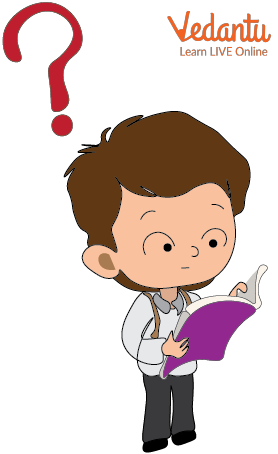
Reading an Essay and Story
Essays can be of many different types, including academic and personal ones. Essays give readers a firsthand account of a certain subject. On the other hand, a short tale can be thought of as an artistic work that includes a storyline and tells a story. Let us read ahead to know more about the distinction between an essay and a short story.
What is an Essay?

A Boy Writing an Essay
A piece of writing about a particular subject is known as an essay. It offers a very methodical explanation of the subject to the reader. The author gives an analysis after looking at the subject's various facets.
Every essay has a standard format that consists of an introduction, a body, and a conclusion. The reader can learn all there is to know about a topic by reading an essay. The writer typically includes factual data, a range of viewpoints, attitudes, and even their own opinions.
Teachers in schools urge students to produce essays on a variety of subjects. The level of the student's maturity determines the topic's difficulty and standard. Lower grade pupils will be asked to write essays on subjects such as environmental pollution, the first day of school, someone I admire, and so on.
However, if the children are significantly more educated, the lecturers would cover subjects like the death penalty, the present teen and technology, etc. Writing essays gives students the chance to express their ideas clearly.
What is a Story?

An Elderly Person Reading Stories to Children
A narrative that is shorter in length than a novel is referred to as a tale. It features fewer characters and only one plot, which serves as the foundation for the incident or story. It is constrained rather than having a wide scope and numerous plots. For instance, the focus of a narrative can be on a single day in the life of the main character.
The primary character may interact with other minor characters, but they will not receive as much attention as they do. The reader will be able to understand the character's nature through their thoughts, feelings, and ideas. Even though a narrative is brief, the author might nevertheless have a significant impression on the reader.
A story author can employ a range of literary techniques, including irony and satire, to achieve certain results. Another characteristic of a story is that it contains action, which also emphasises a key distinction between a story and an essay. An essay cannot show this characteristic.
Difference between Essay and Story

A Child Attempting to Write an Essay
The following are the points of difference between an essay and a story:
Essay and Short Story Definitions
Essay: An essay is a piece of writing about a particular subject.
Story: A narrative that is shorter in length than a novel is referred to as a story.
Experience and Explorations
An essay offers a detailed report on a certain subject by delving into its many facets and giving the reader accurate facts.
In contrast, a short tale focuses more on an individual's experience than a theme.
The plot of an essay is nonexistent.
A short narrative has a plot that it is constructed around.
You cannot observe any action in an essay.
A short narrative contains action because the characters exhibit a range of behaviours that advance the plot.
There aren't any characters in an essay.
The main character is just one of several characters in a short story.
The main differentiation between a short story and a personal essay is that the former is typically autobiographical, while the latter is typically fictional. A short narrative will typically have invented characters and invented plots, though there are several exceptions to this norm. You can visit our website to read different types of short stories and essays and identify the differences between them.

FAQs on What is the difference between an Essay and a Story?
1. What distinguishes a long essay from a short essay and what does an essay conclusion mean?
In a classroom, a "brief essay" can be 300 words long. It might be 1,000 words in a major newspaper. In a classroom, anything over the threshold for "short"—301 words, for example—could be considered a "long essay." In a scholarly publication, a "long essay" could be 5,000 words lengthy.
The last paragraph of your essay is the conclusion. The key themes of the essay should be tied together in a compelling conclusion. Explain why your point is important and leave a lasting effect on the reader.
2. What does a story's conclusion mean and can a tale be present in an essay?
The conclusion paragraph should repeat your thesis. List the important points you made in favour of it throughout the paper, and provide your assessment of the main idea. The lesson of your tale or a revelation of a deeper reality should be included in the concluding summary.
In a narrative essay, a tale is told. Typically, this is a tale of a personal encounter you experienced. Contrary to most academic writing, this form of essay and the descriptive essay allows you to express yourself creatively and personally.

Want to create or adapt books like this? Learn more about how Pressbooks supports open publishing practices.
3.7–Sample Analysis of a Short Story
Travis Rozier and R. Paul Cooper
How to Read this Section
This section contains two parts. First, you will find the prompt. The prompt is a very important element in any writing assignment. Don’t be fooled by the fact it is short! Even though it is a short document, it highlights and makes clear every element you will need to complete the given assignment effectively. When writing an essay, the prompt is where you will both begin and end. Seriously. Before you begin, familiarize yourself with the prompt, and before you submit your final draft, give the prompt one final read over, making sure you have not left anything out. When you visit the University Writing Center and Libraries, they can better help if you bring along the prompt. Both the Writing Center [1] and the Libraries [2] provide indispensable tools to aid students, so take advantage of their services.
The second part of this section contains a simulated student essay—the essay is not an actual student essay, but an essay written to demonstrate a strong student essay. The essay in this section is not meant to represent a “perfect” essay; it has its faults. However, this essay is an effective response to the given prompt. The “student” essay will be represented in a wide column on the left, and the grader’s commentary will be represented in a smaller column on the right. Use the example and the comments to help you think about how you might organize your own essay, to think about whether you will make similar—or different—choices.
Sample Prompt
Assignment Description: For this essay, you will choose a short story and write an analysis that offers an interpretation of the text. You should identify some debatable aspect of the text and argue for your interpretation using your analysis of the story supported by textual evidence.
Content: The essay should have a clear argumentative thesis that makes a debatable claim about the text. When analyzing the text, you should consider the elements of the short story discussed in class (plot, narration, character, setting, tone and style, theme, symbol, etc.). However, you should only analyze those elements that are important to understanding your interpretation of the text. You should also convey the implications of your specific claim about the text for how we might interpret the text as a whole. How does your argument shape the way we read meaning into the text?
Research Expectations: As this is not a research paper, you should use no more than two or three outside, scholarly sources, and these should be confined to historical, biographical, or literary context. In other words, they should not offer any analysis of the text itself. All the interpretative work in this paper should be produced by your own readings of the text in light of relevant contexts.
Format: All citations should adhere to current MLA 8 guidelines, and a Works Cited page including entries for the primary text and any secondary sources is also required. You will also be graded on form and correctness, so make sure you edit and proofread carefully for grammar, punctuation, etc.
Scope/Page Count: Word count should fall between 900–1200 words (3–4 pages).
Short Story Student Essay
| Student Essay | Instructor Annotations |
|---|---|
| Hannah Elizabeth Bowling : Marital Conflict in “A Red Girl’s Reasoning” |
|
| In writing “A Red Girl’s Reasoning,” Johnson explores through Christie McDonald, a mixed-race young woman like herself. Like Christie, Johnson was both a part of and yet separate from Canadian middle-class society in the early 1900s because of her Indian heritage. Christie, unlike Johnson, marries a young white man named Charlie McDonald. In Charlie, though, Christie does not find mooring for her liminality. |
|
| At the beginning of “A Red Girl’s Reasoning,” Charlie is introduced to the reader in conversation with his father-in-law while waiting for Christie to appear. When Jimmy Robinson tells Charlie that he does not understand Indigenous people or their cultures , who has lived over twenty years in native lands, Charlie balks at this assessment: “But I’m just as fond of them” and “I get on with them too, now, don’t I?” are his cries in response (Johnson 1). This incident highlights Charlie’s insistence on always being correct, regardless of whether or not he is actually right or not. It also foreshadows how his insistence at always being right will later create marital conflict with his new bride. |
|
| He also becomes jealous; at the thought, instigated by Mrs. Stuart, that Joe does not love Christie nearly as much as she deserves, he confronts his brother about the matter. “I’ve never asked you yet what you thought of her, Joe,” he ponders with his brother (4). Unsatisfied with his brother’s answer of “I’m glad she loves you,” Charlie tells Joe that “If she hated you, you’d get out. If she loved you I’d you get out” (4). This scene, while seemingly a minor incident in the text, becomes alarming when coupled with Charlie’s discussion with Jimmy Robinson. Like everyone else in Ottawa, he perceives her as “a potent charm to acquire popularity” (3). |
|
| At the party, when confronted by numerous individuals as to the nature of her father and mother’s marriage, Christie admits that they were not married by a priest. Horrified by this lack of propriety and despite her clarification that “the marriage was performed by Indian rites,” guests like Captain Logan and Mrs. Stuart immediately begin to gossip at hints of impropriety in Christie and Charlie’s marriage itself (Johnson 6). “Poor old Charlie has always thought so much of honorable birth,” Captain Logan says, perhaps the most damning indictment of Charlie’s character in the short story (6). Charlie, who was not made privy to this information before his marriage, is beyond angry by this news. What he is angry about is not the information being withheld from him, though; instead, he is angry with Christie at ruining her, and therefore his, reputation. Immediately after the disastrous party, Charlies skulks off by himself before returning home to confront Christie. At the sight of her, he cries “You have disgraced me; and, moreover, you have disgraced yourself and both your parents” (Johnson 7). When Christie throws in his face the fact that he “who [has] studied my race and their laws for years” accuses her of bastardry, Charlie is affronted: “Your father was a fool not to insist upon the law, and so was the priest” (6-7). Despite studying and understanding Indian culture for years and marrying an Indian woman, Charlie insists that Christie’s parents “live in more civilized times” and should therefore have had a Christian wedding with a priest in order to authorize their marriage (8). Ultimately, however, Christie wears down Charlie’s ignorant arguments until he cries “the trouble is they won’t keep their mouths shut” (8). Even in this moment of intense argument with Christie over a subject that ultimately proves the end of their marriage, Charlie cannot stop prioritizing the opinions of those in white Ottawan society. Because of her announcement, Charlie has been made a fool in front of his friends, colleagues, and the city writ-large, and his anger at this prompts him to announce “God knows” when Christie asks whether it would have made a difference when deciding to marry her (8). | |
| He alienates Christie from white society by castigating her for her parents’ lack of “propriety” (by a white man’s standard) and refusing to recognize the validity of her people’s customs. Christie occupies a liminal space between being white and being Indigenous that cannot support Charlie’s racist attempts to capitalize on her beauty and appeal to society as the new “rage” for his own social gain. Through Christie, Pauline Johnson explores the fraught nature of being an Indian in a white man’s world, while through Charlie, Johnson exposes how white society commodifies the lives and cultures of Indigenous people during the early twentieth century. |
|
| Works Cited |
Attribution:
Bowling, Hannah Elizabeth. “Short Story: ‘Blood for Blood’: Marital Conflict in ‘A Red Girl’s Reasoning.’” In Surface and Subtext: Literature, Research, Writing . 3rd ed. Edited by Claire Carly-Miles, Sarah LeMire, Kathy Christie Anders, Nicole Hagstrom-Schmidt, R. Paul Cooper, and Matt McKinney. College Station: Texas A&M University, 2024. Licensed under a Creative Commons Attribution-NonCommercial 4.0 International License .
Rozier, Travis, and R. Paul Cooper. “Short Story: Sample Analysis of a Short Story.” In Surface and Subtext: Literature, Research, Writing . 3rd ed. Edited by Claire Carly-Miles, Sarah LeMire, Kathy Christie Anders, Nicole Hagstrom-Schmidt, R. Paul Cooper, and Matt McKinney. College Station: Texas A&M University, 2024. Licensed under a Creative Commons Attribution-NonCommercial 4.0 International License .
- University Writing Center, Texas A&M University, 2021, https://writingcenter.tamu.edu/. ↵
- Texas A&M University Libraries, Texas A&M University, 2021, https://library.tamu.edu/. ↵
3.7--Sample Analysis of a Short Story Copyright © 2024 by Travis Rozier and R. Paul Cooper is licensed under a Creative Commons Attribution-NonCommercial 4.0 International License , except where otherwise noted.
TRY OUR FREE APP
Write your book in Reedsy Studio. Try the beloved writing app for free today.
Craft your masterpiece in Reedsy Studio
Plan, write, edit, and format your book in our free app made for authors.

Guides • Perfecting your Craft
Posted on May 17, 2021
What is a Short Story? Definitions and Examples
About the author.
Reedsy's editorial team is a diverse group of industry experts devoted to helping authors write and publish beautiful books.
About Savannah Cordova
Savannah is a senior editor with Reedsy and a published writer whose work has appeared on Slate, Kirkus, and BookTrib. Her short fiction has appeared in the Owl Canyon Press anthology, "No Bars and a Dead Battery".
A short story is a form of fiction writing defined by its brevity . A short story usually falls between 3,000 and 7,000 words — the average short story length is around the 5,000 mark. Short stories primarily work to encapsulate a mood, typically covering minimal incidents with a limited cast of characters — in some cases, they might even forgo a plot altogether.
Many early-career novelists have dabbled in the form and had their work featured in literary magazines and anthologies. Others, like Raymond Carver and Alice Munro, have made it their bread and butter. From “starter” short story writers to short story experts, there’s an incredible range of short stories out there.
In this series, we'll be looking into short stories and showing you how any writer can create a powerful piece of fiction — and even get it published. But before we get into the weeds, let's look at a few examples to demonstrate the range and flexibility of this form.
Broadly speaking, you could answer the question of "what is a short story" in a few ways, starting with the most obvious.
A classic short narrative
Though short stories must inherently be concise pieces of writing, they often incorporate elements of the novel to retain a similar impact. A ‘classic short narrative’ is the most story-telling-by-the-numbers that a short story can get — the plot will imitate long-form fiction by having a defined exposition, rising action, a climax, and a resolution.
Short stories do differ from longer prose works in some respects: they’re unlikely to contain a huge cast of characters or successive climaxes like those found in novels. But despite these cuts, if the author does their job right, a ‘classic’ short story will be just as affecting and memorable as a novel — if not more so.
Example #1: “Speaking in Tongues” by ZZ Packer

Tia, disillusioned with her strict Pentecostal upbringing in a sleepy Southern town, escapes her great-aunt’s clutches to find her mother in Atlanta. This story starts with a classic expository beat — Tia at school, flicking through a religious textbook, dreaming of another life. This is followed by a crisis: Tia travels by bus to the big city, befriends a man on the street, and goes to stay with him, only to learn that he is a drug dealer and a pimp. Eventually, Tia returns home to her great-aunt. In all, it’s a sensitive story about the vulnerability of youth and the longing for family.
As short stories go, “Speaking In Tongues” has a pretty impressive narrative. You can see how the premise and plot could work as a longer piece of fiction, but they pack even more of a punch in this shorter form.
A vignette is a short story that presents a neatly packaged moment in time, usually in quite a technically accomplished fashion. ‘Vignette’ is French word more frequently used to signify a small portrait, but in a literary sense, it means “a brief evocative description, account, or episode”. This could be of a person, event or place.
Fleetingness is at the crux of a vignette short story. For that reason, it is likely to be heavy on description, light on plot . You might find a particularly embellished description of a character or setting, often with a strong dose of symbolism that corresponds with a central theme.
Example #2: “Viewfinder” by Raymond Carver
“Viewfinder” has a simple premise: a traveling photographer takes a photo of the narrator’s house, sells it to him on his doorstep, and is invited in for coffee. The story emphasizes feelings of loneliness that come to the fore in their interaction, captured brilliantly by Carver’s unadorned writing style. Tales like this that attribute importance to the mundane are arguably best served by a concise form as Carver's fascination with banal events could have become repetitive and rudderless in a longer piece of work.
Many critics agree that no one writes the American working classes quite like Carver. His stories chronicle the everyday experiences of Midwestern men and women eking out a living then fish, play cards, and shoot the breeze as life passes them by. It won Carver immense critical acclaim in his lifetime and is a great example of short-form writing that emphasizes mood rather than plot.

An anecdote
An anecdote recounted to friends is most successful when it’s pacey, humorous, and has a quick crescendo. The same can be said of short stories that capitalize on this storytelling device.
Anecdotal stories take on a more conversational tone and are more meandering in style, in contrast to the directness of other short stories and flash fiction. It can have a conventional story structure, like the classic short narrative, or it may focus on a particular stylistic recounting of an event. Basically, an anecdote allows a writer to have fun with the way a story is told — though exactly how it unfolds remains important too.
Example #3: “We Love You Crispina” by Jenny Zhang
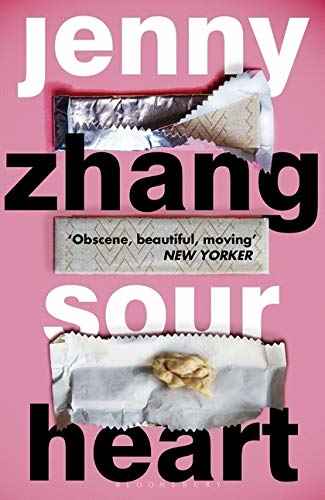
Zhang’s 2017 short story collection Sour Heart chronicles the rough-and-tumble lives of recently immigrated Chinese-Americans living in downtown Manhattan. The stories in this collection are told from the perspectives of children, and the narrative takes full advantage of the impish, filterless way in which children relate their own experiences to themselves and others.
In “We Love You Crispina”, young Christina’s life in a crowded Washington Heights tenement block is refracted through her naive, contradictory understandings of the world. Her parents are struggling to get a leg up and are contemplating sending her back to Shanghai — but Christina is more concerned with how the bed bugs in their cramped apartment are making her itchy, and dissecting the interactions she has in the school playground. It’s a wonderfully nuanced exercise in contrast, as well as a reminder of what feels most important to us when we’re small, rendered potently through Christina’s 'anecdotal' voice.
What short story should you read next?
Find out here! Takes 30 seconds
An experiment with genre
Short stories, by nature, are more flexible pieces of fiction that aren’t wedded to the diktat of longer-form fiction. It means they can play around with and challenge the expectations of a genre’s expected conventions, in a relatively ‘low stakes’ way compared to a full-blown novel.
Oftentimes, an experiment won’t be a complete reinvention of the genre. Instead, one might find a refreshing twist on a classic trope — or, as in the example below, upping the ante and taking a genre to heights it has never been before.
Example #4: “A Good Man is Hard to Find” by Flannery O’Connor
This short story sent shock waves through the American literary establishment when it was first published in 1953. It follows a Southern family on a road trip to visit the children’s grandmother — who end up crashing their car and happening upon a mysterious group of men. I won’t spoil the rest for you, but one word of warning: don’t expect a happy ending.
“A Good Man Is Hard To Find” incorporates common themes of Southern gothic literature, like religious imagery, and — surprise surprise — characters meeting a gruesome demise, but its controversial final scene marks it out. The macabre detail was shocking to audiences at the time but is now held up as a stellar example of the genre (and also exemplifies how a well-executed bit of subversion can become the golden standard in literature!). You might want to sleep with one eye open after reading this, but that’s half the point, right?
An exercise in extreme brevity
How many words do you actually need to tell a great story? If you were to ask that to someone who writes flash fiction, they tell you "fewer than 1,000 words."
The defining element that sets flash fiction apart from the standard-issue short story — other than word count — is that much more needs to be implied , rather than said upfront. Flash fiction, and especially mega-short microfiction, perfectly embody this principle of inference, which itself derives from Ernest Hemingway’s Iceberg Theory of story development.
Example #5 “Curriculum” by Sejal Shah
“ Curriculum ”, clocking in at exactly 500 words, is a great sampling of the emotional, personal language that appears frequently in flash fiction. A handkerchief, some cream cloth, and a pair of glasses become important symbols around which Shah contemplates identity and womanhood, in the form of a series of questions that follow her descriptions of the objects.
This kind of deliberate, highly considered structure ensures that Shah’s flash fiction makes a razor-sharp point, whilst also allowing for a contemplative tone that transcends the words on the page. When done well, this style of short fiction can be a greater-than-expected vehicle for thoughtful comments on a range of issues.
If you’re in the mood to read more around the form, check out our picks for the 31 best short stories of all time.
As you can see, the short story is an art form on its own that requires deftness, clarity, and a strong grasp of how to make an economy of words compelling and innovative. If you’re feeling ready to write a short story of your own, proceed to the next post in this series.
Join a community of over 1 million authors
Reedsy is more than just a blog. Become a member today to discover how we can help you publish a beautiful book.

Craft a satisfying story arc
Outline and write your short story with our step-by-step template.

1 million authors trust the professionals on Reedsy. Come meet them.
Enter your email or get started with a social account:
Reading and Interpreting Literary Texts
How to analyze a short story.

Old Fence. A short story has a structure and a message. Can you analyze this picture in much the same way as a short story?
What Is a Short Story?
A short story is a work of short, narrative prose that is usually centered around one single event. It is limited in scope and has an introduction, body and conclusion. Although a short story has much in common with a novel (See How to Analyze a Novel), it is written with much greater precision. You will often be asked to write a literary analysis. An analysis of a short story requires basic knowledge of literary elements. The following guide and questions may help you:
Setting is a description of where and when the story takes place. In a short story there are fewer settings compared to a novel. The time is more limited. Ask yourself the following questions:
- How is the setting created? Consider geography, weather, time of day, social conditions, etc.
- What role does setting play in the story? Is it an important part of the plot or theme? Or is it just a backdrop against which the action takes place?
Study the time period, which is also part of the setting, and ask yourself the following:
- When was the story written?
- Does it take place in the present, the past, or the future?
- How does the time period affect the language, atmosphere or social circumstances of the short story?
Characterization
Characterization deals with how the characters in the story are described. In short stories there are usually fewer characters compared to a novel. They usually focus on one central character or protagonist. Ask yourself the following:
- Who is the main character?
- Are the main character and other characters described through dialogue – by the way they speak (dialect or slang for instance)?
- Has the author described the characters by physical appearance, thoughts and feelings, and interaction (the way they act towards others)?
- Are they static/flat characters who do not change?
- Are they dynamic/round characters who DO change?
- What type of characters are they? What qualities stand out? Are they stereotypes?
- Are the characters believable?
Plot and structure
The plot is the main sequence of events that make up the story. In short stories the plot is usually centered around one experience or significant moment. Consider the following questions:
- What is the most important event?
- How is the plot structured? Is it linear, chronological or does it move around?
- Is the plot believable?
Narrator and Point of view
The narrator is the person telling the story. Consider this question: Are the narrator and the main character the same?
By point of view we mean from whose eyes the story is being told. Short stories tend to be told through one character’s point of view. The following are important questions to consider:
- Who is the narrator or speaker in the story?
- Does the author speak through the main character?
- Is the story written in the first person “I” point of view?
- Is the story written in a detached third person “he/she” point of view?
- Is there an “all-knowing” third person who can reveal what all the characters are thinking and doing at all times and in all places?
Conflict or tension is usually the heart of the short story and is related to the main character. In a short story there is usually one main struggle.
- How would you describe the main conflict?
- Is it an internal conflict within the character?
- Is it an external conflict caused by the surroundings or environment the main character finds himself/herself in?
The climax is the point of greatest tension or intensity in the short story. It can also be the point where events take a major turn as the story races towards its conclusion. Ask yourself:
- Is there a turning point in the story?
- When does the climax take place?
The theme is the main idea, lesson, or message in the short story. It may be an abstract idea about the human condition, society, or life. Ask yourself:
- How is the theme expressed?
- Are any elements repeated and therefore suggest a theme?
- Is there more than one theme?
The author’s style has to do with the his or her vocabulary, use of imagery, tone, or the feeling of the story. It has to do with the author’s attitude toward the subject. In some short stories the tone can be ironic, humorous, cold, or dramatic.
- Is the author’s language full of figurative language?
- What images are used?
- Does the author use a lot of symbolism? Metaphors (comparisons that do not use “as” or “like”) or similes (comparisons that use “as” or “like”)?
Your literary analysis of a short story will often be in the form of an essay where you may be asked to give your opinions of the short story at the end. Choose the elements that made the greatest impression on you. Point out which character/characters you liked best or least and always support your arguments.
- How to Analyze a Short Story. Authored by : Carol Dwankowski. Provided by : ndla.no. Located at : http://ndla.no/en/node/9075?fag=42&meny=102113 . License : CC BY-SA: Attribution-ShareAlike
Home — Essay Samples — Literature — Literary Genres — Short Story
Essays on Short Story
Brief description of short story, importance of writing essays on this topic, tips on choosing a good topic, essay topics, concluding thought, the theme of sadie maude: exploring the livingest moments of life, lusus naturae analysis, made-to-order essay as fast as you need it.
Each essay is customized to cater to your unique preferences
+ experts online
Analysis of Conflict in Jhumpa Lahiri's "This Blessed House"
Darkness in the short stories of james joyce, description of an abandoned house: a short story, personal development of the main character in raymond's run, let us write you an essay from scratch.
- 450+ experts on 30 subjects ready to help
- Custom essay delivered in as few as 3 hours
Bridging The Gap: Comparing "Letters from My Father" and "The Writer"
The effects of class and morality in 'the boarding house' by james joyce, the connection between art and history for julian barnes, analysis of the short story 'the storm' by kate chopin, get a personalized essay in under 3 hours.
Expert-written essays crafted with your exact needs in mind
Analysis of Anton Chekhov’s Short Story "Agafya"
Sister lilith by honorée fanonne jeffers: dismissal of patriarchal values, critical analysis of the lesson by toni cade bambara, our town by thornton wilder: the message to appreciate life, a brief history of perfume, my most embarrassing moment, "a man called horse" as transgression of the western genre, readers’ interpretation of barn burning by haruki murakami, gaze through the window: paralyses in joyce's "dubliners", feeling of imprisonment, blind devotion in james joyce’s "araby", life and death in "dubliners" by james joyce, epiphany in james joyce’s araby, already dead: the need for human interaction in butler’s "titanic victim speaks through waterbed", poe’s use of literary techniques in the tell-tale heart, main themes in kate chopin's 'the storm', the yellow wallpaper by charlotte perkins gilman: a woman’s plight, mrs. fullerton’s odd dominos of ambition, two-faced: characterization in bad haircut, analysis of setting in ‘’eveline’’ by james joyce, relevant topics.
- Gothic Fiction
By clicking “Check Writers’ Offers”, you agree to our terms of service and privacy policy . We’ll occasionally send you promo and account related email
No need to pay just yet!
We use cookies to personalyze your web-site experience. By continuing we’ll assume you board with our cookie policy .
- Instructions Followed To The Letter
- Deadlines Met At Every Stage
- Unique And Plagiarism Free
- How It Works
- Prices & Discounts
Story Analysis: How to Analyze a Short Story Step-by-Step
Table of contents
Share this article
Achieve Academic Success with Expert Assistance!
Crafted from Scratch for You.
Ensuring Your Work’s Originality.
Transform Your Draft into Excellence.
Perfecting Your Paper’s Grammar, Style, and Format (APA, MLA, etc.).
Calculate the cost of your paper
Get ideas for your essay
Amazon products to make life easier, starting under $10
- Share this —

- Watch Full Episodes
- Read With Jenna
- Inspirational
- Relationships
- TODAY Table
- Newsletters
- Start TODAY
- Shop TODAY Awards
- Citi Concert Series
- Listen All Day
Follow today
More Brands
- On The Show
- TODAY Plaza
50 vampire quotes that'll leave you thirsty for more

“I vant to drink your blood!”
While that's one of the most oft repeated vampire quotes of all time, it's hardly the only one. In fact, there are all kinds of vampire sayings from books, movies and TV shows and if you're on the hunt for one, then you're in luck, because we've got an entire collection to choose from.
Much like witches , werewolves and ghosts , vampires have come to symbolize Halloween. That said, our fascination with the mythical bloodsuckers goes all the way back to ancient times, and thanks to movies and TV shows like “Twilight” and “True Blood,” the obsession shows no signs of waning.
In honor of the beloved bloodsuckers , you find chilling vampire quotes from Bram Stoker's classic novel “Dracula” like, “I want you to believe ... to believe in things that you cannot,” as well as laugh-out-loud lines from “What We Do in the Shadows.”
There are also memorable quotes from Lord Byron, William Shakespeare and “Interview with the Vampire” author, Anne Rice, among others.
Use one of these sayings as an Instagram caption , to send to a vampire-loving friend or simply help you get into the spirit of the spooky season.
Whatever you settle on, one thing's for sure — these vampire quotes definitely don't suck .
Vampire Quotes
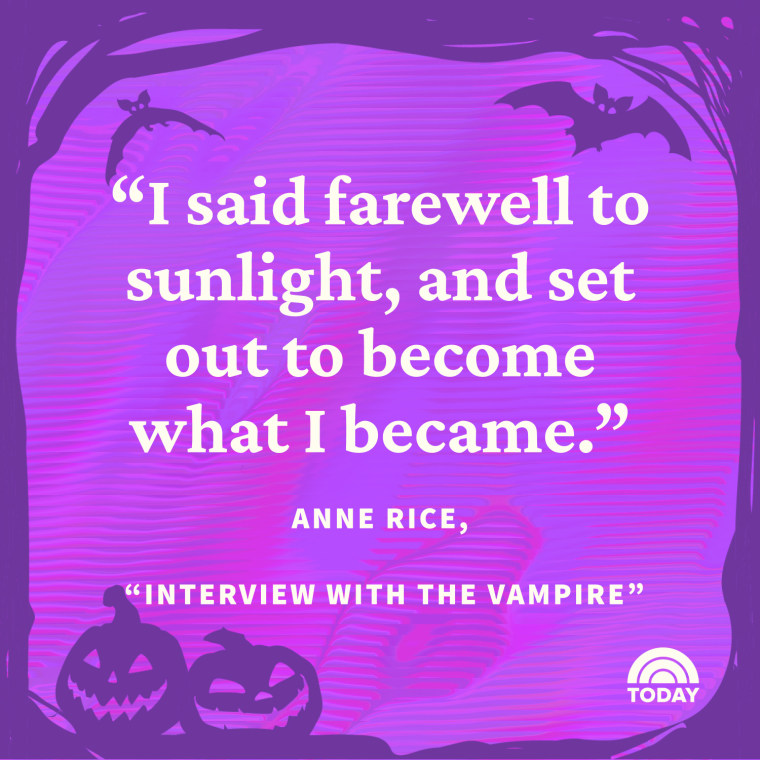
- “I am Dracula, and I bid you welcome, Mr. Harker, to my house. Come in, the night are is chill, and you must need to eat and rest.” — Bram Stoker, “Dracula”
- “We are the things that others fear.” — Anne Rice, “The Vampire Lestat”
- “Souls and memories can do strange things during trance.” — Bram Stoker, “Dracula”
- “The blood jet is poetry, There is no stopping it.” — Sylvia Plath, “Kindness”
- “Nothing else but an insatiate thirst of enjoying a greedily desired object.” — Michel de Montaigne
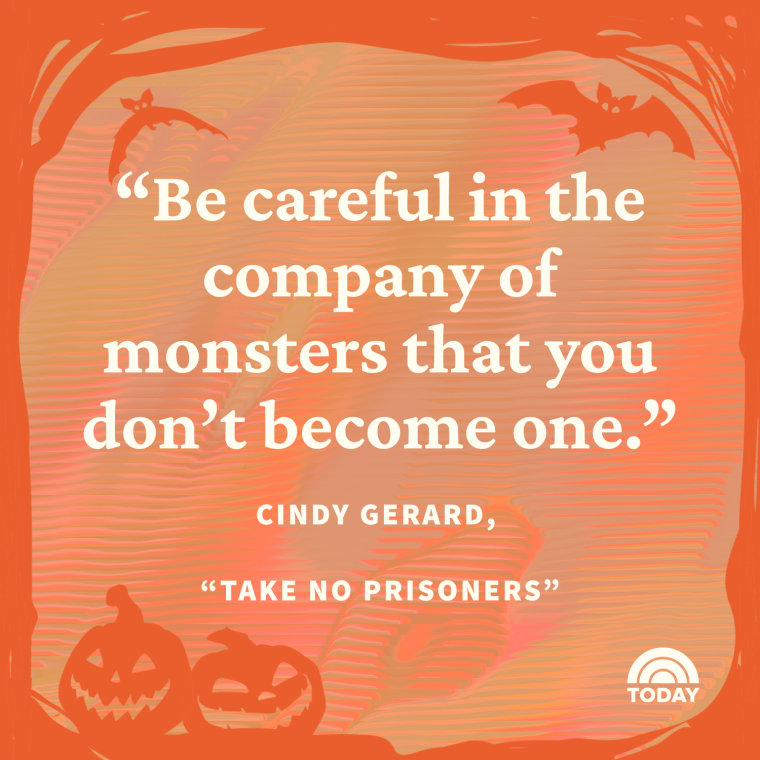
- “Evil has only the power that we give it.” — Ray Bradbury, “Something Wicked This Way Comes”
- “They cannot be seen because they creep only in the dark.” — H.P. Lovecraft, “The H.P. Lovecraft Collection”
- “Whoever is not in his coffin and the dark grave, let him know he has enough.” — Walt Whitman
- “Life itself is but the shadow of death, and souls departed but the shadows of the living.” — Thomas Browne, “The Garden of Cyrus”
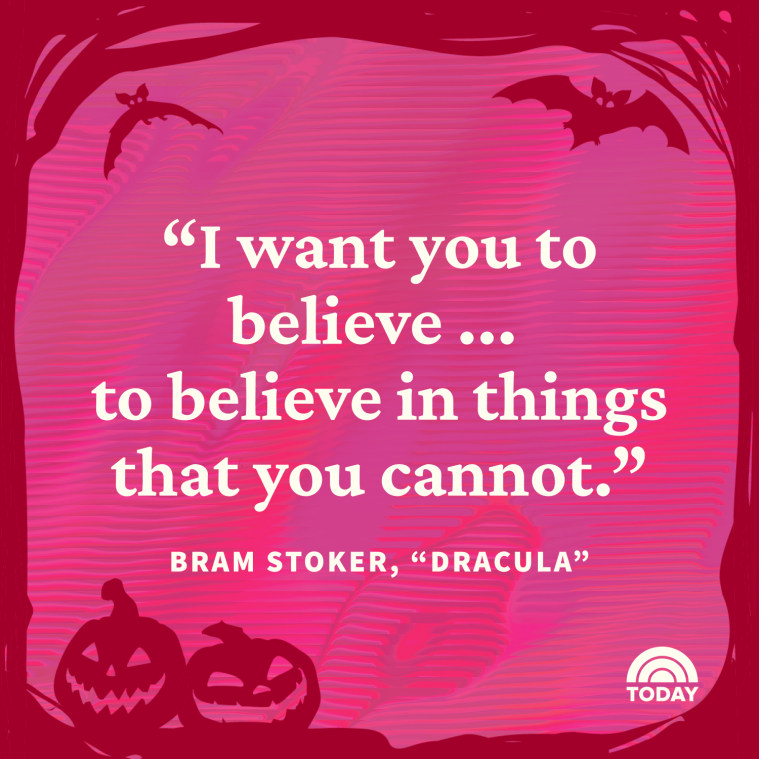
- “Vampires, werewolves, fallen angels and fairies lurk in the shadows, their intentions far from honorable.” — Jeaniene Frost
- “The thirst that from the soul doth rise, Doth ask a drink devine” — Ben Jonson
- “A deep sleep fell upon me — a sleep like that of death.” — Edgar Allan Poe, “The Pit and the Pendulum”
- “By the pricking of my thumbs, Something wicked this way comes.” — William Shakespeare, “Macbeth”
- "I want you to believe ... to believe in things that you cannot.” — Bram Stoker, "Dracula"
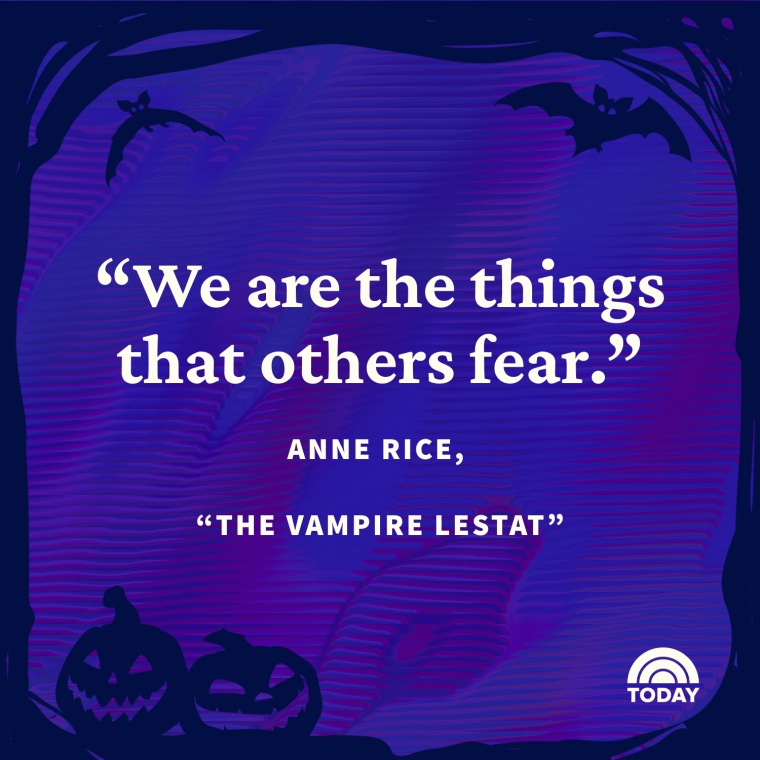
- “But first, on earth as vampire sent, Thy corse shall from its tomb be rent, Then ghastly haunt thy native place, And suck the blood of all thy race.” — Lord Byron
- “Be careful in the company of monsters that you don’t become one.” — Cindy Gerard, “Take No Prisoners”
- “Everybody is a book of blood; wherever we’re opened, we’re red.” ― Clive Barker, “Books of Blood: Volumes One to Three”
- “He had existed for a long time and was fluent in many languages — most of them … dead ones.” — Alan Kinross, “Longinus The Vampire”
- “Give me my robe, put on my crown; I have Immortal longings in me.” — William Shakespeare, “Antony and Cleopatra”
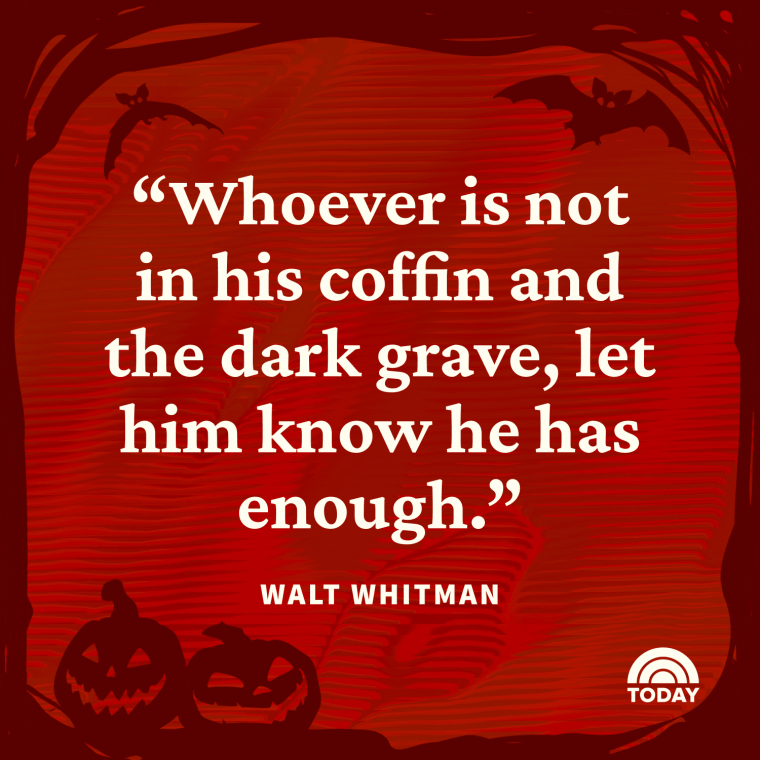
- “Deep into that darkness peering, long I stood there wondering, fearing, doubting, dreaming dreams no mortal ever dared to dream before.” — Edgar Allen Poe
- “I said farewell to sunlight, and set out to become what I became.” — Anne Rice, “Interview with the Vampire”
- “The undead did not love, but they remembered love with a savage loyalty.” — Kim Harrison, “A Perfect Blood”
- “Immortality is not a gift, Immortality is an achievement; And only those who strive mightily, Shall possess it.” — Edgar Lee Masters
- “I can smell that hot blood just under your skin.” — Luke McDonald, “True Blood“
Funny Vampire Quotes

- “One thing about living in Santa Carla I never could stomach; all the damn vampires.” — Grandpa, “The Lost Boys”
- “Yeah, some of our clothes are from victims. You might bite someone and then, you think, ‘Oooh, those are some nice pants!’ — Viago, “What We Do in the Shadows”
- “Some people have swimming pools, others have private cemeteries. It can happen.” — Sara Evers, “Haunted Mansion”
- “Pardon me, boy. Is this the Transylvania station?” — Dr. Frederick Frankenstein, “Young Frankenstein”
- “I got the sneaking suspicion that the vampire was a couple of Peeps short of an Easter basket.” — Jim Butcher, “Proven Guilty”
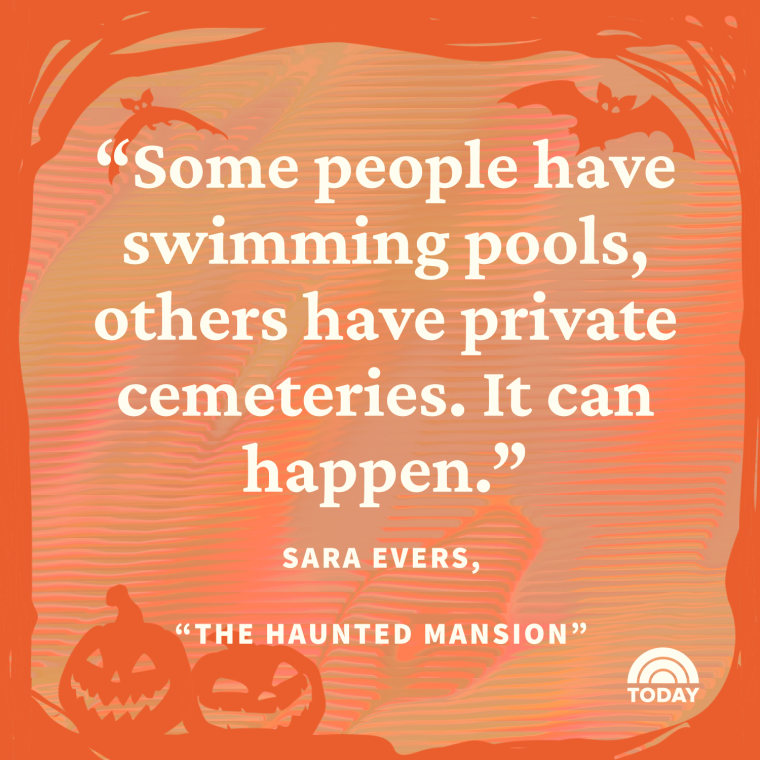
- “But I don't want to be a vampire drone. They'll suck my blood and make me wear only the very latest fashions.” — Gail Carriger, “Etiquette & Espionage”
- “Creepy paper. Creepy paper. Creepy ... Oh! Multipack!” — Nandor, “What We Do in the Shadows”
- “If stakes and garlic were the top two things that could kill a vampire, ninth grade gym was a close third.” — Heather Brewer, “Ninth Grade Slays”
- “I can’t believe I’m in a graveyard with a strange man hunting for vampires on a school night.” — Buffy, “Buffy the Vampire Slayer”
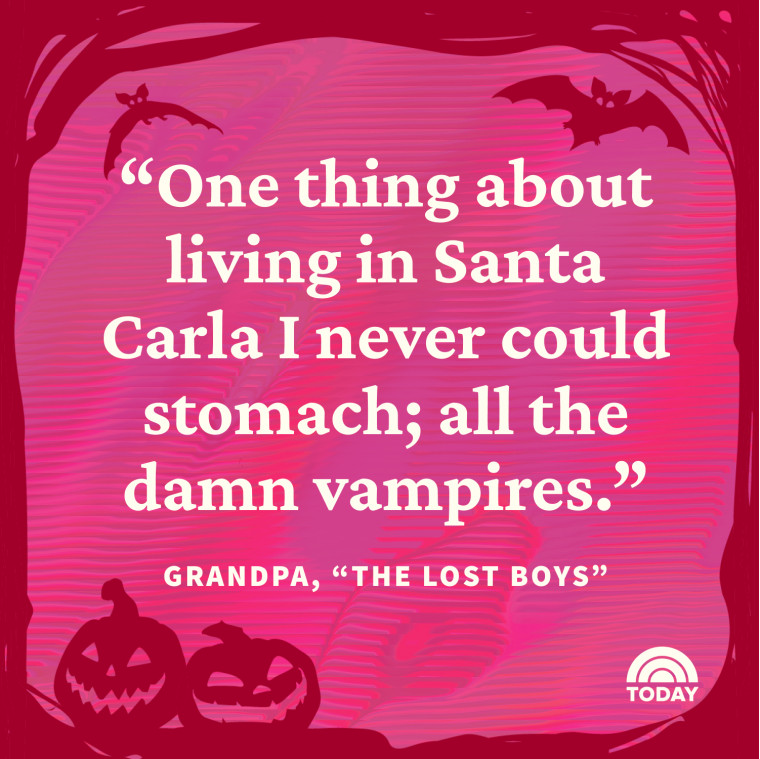
- “I go for a look which I call ‘Dead but Delicious.’” — Vladislav, “What We Do in the Shadows”
- “How stupid is it to French kiss a vampire and not expect sharp teeth?” — Katie MacAlister, “Sex, Lies and Vampires”
- “Twinkle, twinkle little bat! How I wonder what you're at! Up above the world you fly! Like a teatray in the sky!” — Lewis Carroll, “Alice in Wonderland”
- “I ate John. I wept the entire meal. Even though he tasted delicious.” — Nandor, “What We Do in the Shadows”
Short Vampire Quotes
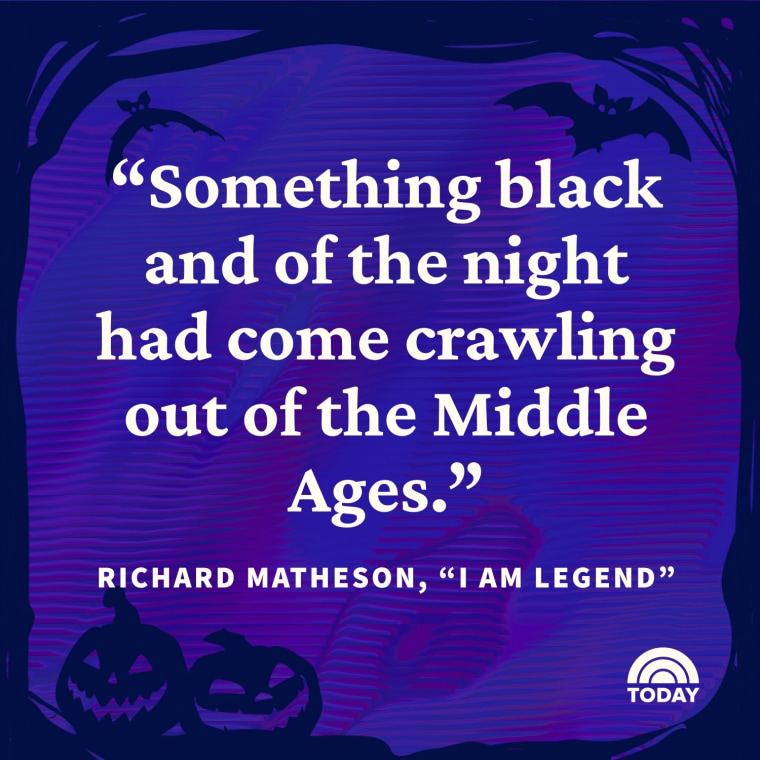
- “Ere the bat hath flown” — William Shakespeare, “Macbeth”
- “Sometimes it was so easy to forget that I was kissing a vampire.” — Stephenie Meyer, “Breaking Dawn”
- “Perhaps the universe is suspended on the tooth of some monster.” — Anton Chekhov
- “Thirst drove me down to the water where I drank the moon's reflection.” — Rumi
- “The dead don’t walk. Except, sometimes, when they do.” — T. Kingfisher, “What Moves the Dead”
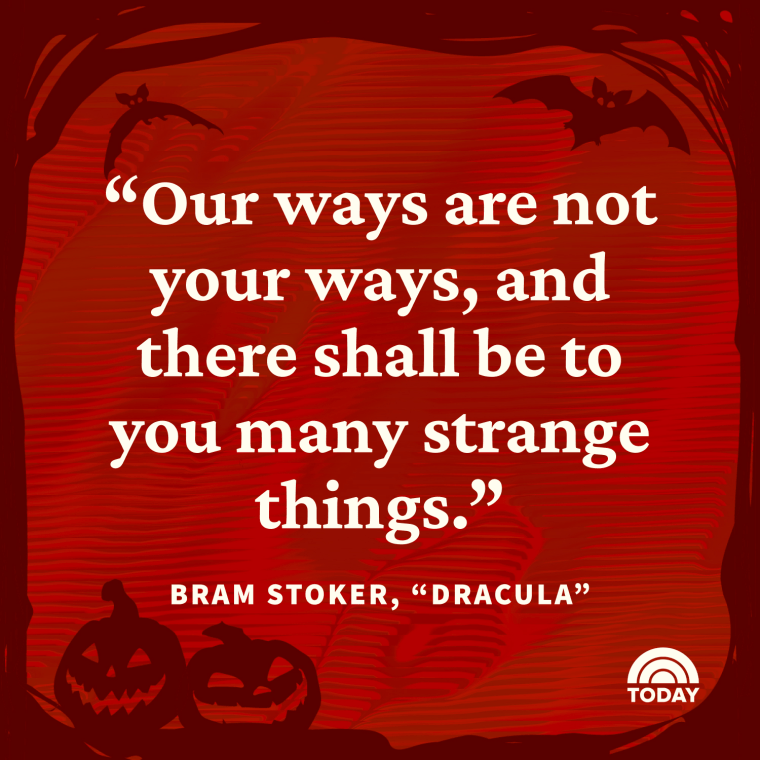
- “I was a newborn vampire, weeping at the beauty of the night.” — Anne Rice, “Interview with the Vampire”
- “Our ways are not your ways, and there shall be to you many strange things.” — Bram Stoker, “Dracula”
- “There falls no shadow where there shines no sun.” — Hilaire Belloc, “On the Same”
- “The light of the sun, the sustained heat of an intense fire — these things might destroy me. But then again, they might not." — Anne Rice, “The Vampire Lestat”
- “I like the night. Without the dark, we'd never see the stars.” — Stephenie Meyer, “Twilight”
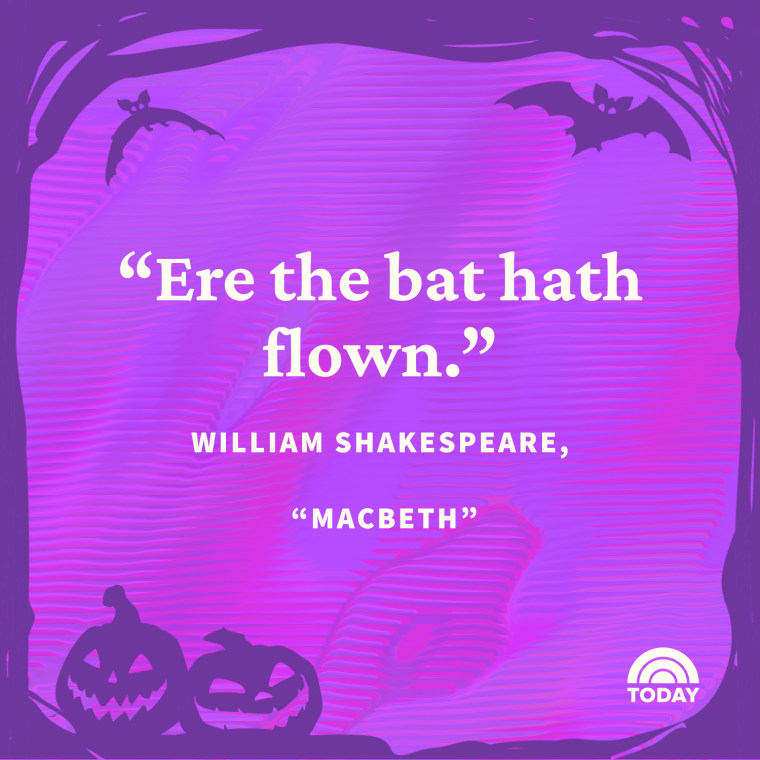
- “Something black and of the night had come crawling out of the Middle Ages." — Richard Matheson, "I Am Legend"
- “His old life lay in mists, dark adventure lay in front.” — J.R.R. Tolkien, “The Lord of the Rings”
- “There are only two kinds of vampire hunters: good ones and dead ones." — Laurell K. Hamilton, “Circus of the Damned”
Sarah is a lifestyle and entertainment reporter for TODAY who covers holidays, celebrities and everything in between.
More Halloween

35 ghost quotes that are hauntingly good
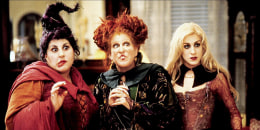
60 classic Halloween movies to stream for a spooky good time

15 Halloween party ideas for the ultimate spooky soirée

60 funny vampire puns that are utterly fang-tastic

50 fall quotes to celebrate the best the season has to offer

Spirit Halloween 2024: Store hours, openings and more

25 witchy songs that'll put a spell on you
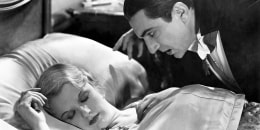
50 vampire jokes you can really sink your teeth into

17 true ghost stories that'll send chills down your spine
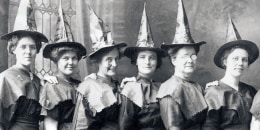
36 vintage Halloween decorations and photos that are frightfully fun
Money blog: Nationwide trumps rivals with mortgage rates 'not seen for two years'
Welcome to the Money blog, a hub for personal finance and consumer news and tips. Today's posts include Nationwide slashing mortgage rates and regulations encouraging builders to fit smaller windows. Listen to Ed Conway's analysis of UK borrowing and potential tax rises as you scroll.
Thursday 22 August 2024 11:37, UK
- 'Foolish' regulations on smaller windows being looked at by government
- McDonald's announces biggest expansion in 20 years as it battles with Greggs
- 'Concerning' practices by some major brands using loyalty schemes
Essential reads
- Savings account that could put your child on strong financial footing at 18
- 'I cook with air fryer in living room after dream kitchen win went wrong'
- Ed Conway : Are tax rises inevitable - or is chancellor considering another way?
- Listen to Conway on the Daily above and tap here to follow wherever you enjoy podcasts
Tips and advice
- How to get money back when purchase over £100 goes wrong
- Cheap Eats : Top Yorkshire chef shares Yorkshire pudding secrets
- 'Hack' can save you £75 on UK tourist site membership
- 'Should I top up my NI and could it really get me £6,000 extra?'
Nationwide today slashed mortgage rates across its range - with one of its deals now the cheapest on the UK-wide market.
A rate of 3.78% is now available to any new and existing customers looking to move home on a five-year fix.
This is how that compares...
The building society says other cuts apply across buyer types.
Justin Moy, managing director at EHF Mortgages, told industry news agency Newspage: "These are significant headline-grabbing rates from Nationwide. These are rates we haven't seen for at least two years.
"They will give borrowers plenty of confidence to get back into the property market."
Rates have been edging down in recent months as lenders price in forecast cuts in the base rate from the Bank of England.
Here's how average rates currently look - though it's worth saying that many buyers will be able to find deals lower than these averages...
McDonald's is to open more than 200 new restaurants across the UK and Ireland over the next four years.
It will be the fast-food chain's largest expansion programme for more than 20 years and will create 24,000 jobs.
New restaurant formats will be tested as part of the rollout, McDonald's said, including trials for smaller site formats and "drive to" restaurant sites.
"We have come a long way since we first opened our doors in Woolwich 50 years ago," said Alistair Macrow, chief executive officer of McDonald's UK&I.
"I'm delighted that in this milestone year we are able to demonstrate our ongoing commitment to growth, and announce the creation of new jobs across the country."
The growth plan is driven by a £1bn investment by the chain and its franchisees.
McDonald's revealed a target of building 10,000 more restaurants globally by 2027.
It currently has 1,435 restaurants in the UK, with around four-fifths owned and operated by franchisees.
But this year it was overtaken by Greggs in the breakfast market - with the bakery chain now turning its focus to evening meal customers.
By James Sillars , business reporter
It's a positive start on the FTSE 100.
A 4% rise in JD Sports stock helped the index climb 0.2% to 8,300 points at the open.
Sports fashion retailer JD had earlier reported a 2.4% rise in underlying sales during its second quarter.
That uptick was not enough, however, to bolster the company's annual profit forecast.
Shares fell sharply in January when JD issued a profit warning, blaming higher costs and poor demand.
They remain about 20% down in the year to date.
Elsewhere, oil costs have continued their decline of the past week.
A barrel of Brent crude currently costs $76.
Fears of weak global demand have been largely responsible for the recent easing.
On the face of it, yesterday's public finance numbers provide a clear rationale for the course of action the chancellor has (according to those I talk to in Whitehall) already decided upon: more taxes and more spending cuts in this October's budget.
It will, I'm told, be pretty grim.
However, it's worth saying there is one other way for the chancellor to create extra headroom against her fiscal rules, which is to change the particular measure she's judging that headroom against.
A lot of economists believe the net debt statistic she inherited from the Conservatives is the wrong one to use in her fiscal rules - and that she should use the country's total national debt, not excluding any debt owned by the Bank of England.
Long story short, if she uses this other measure (and I'm told this is something she is considering) then she suddenly has a lot more headroom.
Even so, don't expect her to change the tune at the budget in October. There will be more bad news to come.
Read my full analysis here ...
The new government is considering whether to scrap health and safety regulations that are seeing homebuilders shrink the size of windows, or put bars on them, to stop people falling out, the Money blog can reveal.
The rules, introduced in December 2021 by the Conservative government, are in the first instance designed to guard against "unwanted solar gains" - or, to put it another way, homes becoming too hot as the climate warms.
This, critics say, is resulting in builders installing smaller windows on new builds.
But they also require builders to account for safety - and so upstairs windows in new-build homes must now be at least 1.1 metres (3.6ft) from the floor.
Former minister Michael Gove launched a review of the rules - with the consultation concluding before the Tories lost power in July.
The new government has yet to make a decision.
A spokesperson for the Ministry of Housing, Communities and Local Government told the Money blog: "We have closed a call for evidence on building regulations and are considering the responses before we make our decision."
Earlier this year, Nicholas Boys Smith, chairman of the Create Street thinktank on urban design, told the Telegraph the "foolish" regulations have "incentivised the building of extremely small windows".
"People are not able to look out of their windows if they are sitting down," he said.
"This means, in a normal-sized suburban house, first-floor rooms are darker and less pleasant.
"It's making it nearly impossible to create houses that fit in with their 20th century, Edwardian, Georgian or Victorian predecessors. The majority of England's most beloved buildings would violate these regulations."
For Savings Guide this week, Savings Champion co-founder Anna Bowes looks at the best junior ISAs.
Most parents want to ensure their children have a strong financial footing when they are older, and there are many ways to support them.
What you choose depends on what access you want your child to have, as well as the risk you are prepared to take, but starting as soon as possible can make a huge difference. As can choosing the most tax efficient options, and a junior ISA (JISA) is often the most obvious option.
A JISA is a tax-free savings account for both the parent and the child, so it can be an ideal account to place funds that you gift to your child.
Most children's savings account could have tax implications
Children have their own personal allowance, so for the majority there will be no tax to pay on their savings interest. However, parents should be aware that there may be a tax liability to themselves on the interest earned on any money they gift to their children, until they reach the age of 18.
If the total gross interest earned on all cash gifted by each parent is more than £100 per year, then all of it (not just the excess) will be treated as that parent's interest for tax purposes and therefore they may need to pay tax at their marginal rate - if it takes them above their personal allowance and/or personal savings allowance.
If the gross interest earned is less than £100 for each parent's gift, it is considered so minimal that parents do not need to declare it.
This is a key reason why parents may prefer to place money they gift to their children into a JISA – as this tax rule does not apply.
What about gifts from other family members or friends?
Gifts from any other family members or friends will not be viewed in the same way. Instead, any interest earned will be treated as belonging to the child themselves and therefore can be earned tax free if they are non-taxpayers.
Something that parents should remember is that while in the JISA, the funds cannot be accessed until the child becomes 18, but at that stage they will have unfettered access to the funds.
But they can also transfer their JISA into an Adult ISA to continue to receive tax-free interest/investment returns.
If you, your friends and family were able to gift a total of £9,000 a year to a child from birth (the current JISA allowance), at a rate of 4.95% (the current best JISA rate), you could give them more than £264,000 when they reach 18. Now that's a gift worth having!
Top JISA rates have so far been unaffected by the recent base rate cut, but they are variable rate accounts, so it's important to keep an eye on the rates being earned going forward to make sure your child continues to earn a competitive rate.
A number of supermarkets and health and beauty retailers have been carrying out "concerning" loyalty scheme practices, Which? has said.
This include prices being increased for a product before they are sold on "offer" to members at their original price, according to the consumer group's investigation.
For example, Boots sold an Oral-B iO7 electric toothbrush at a non-member price of £400, while the members' price was £150.
However, the product had only been £400 for 13 days beforehand, prior to which it was £150 for everyone, Which? found.
Which? says it analysed the pricing history of almost 12,000 products at health and beauty retailers and supermarkets over the past year to uncover how genuine the loyalty savings have been.
It found that some products on a loyalty offer had been at its non-member price for less than half the year.
This applied to one in six Superdrug products and one in 10 at Boots.
At supermarkets, it was 10% with Tesco, 5% at Sainsbury's and 3% at Co-op.
Which? says the guidance on consumer law regarding pricing promotions needs to be updated.
The UK competition watchdog is also currently analysing displayed savings.
The Competition and Markets Authority (CMA) is looking into whether non-member, or regular, prices are artificially inflated by supermarkets to make their loyalty prices appear more attractive, but its initial findings last month indicated retailers are unlikely to be misleading shoppers.
What have the supermarkets and retailers said?
A Superdrug spokeswoman said: "Our products are regularly on a mixture of member-only prices, multibuy promos, and price promotions open to all, to ensure all our customers can make savings on their favourite products throughout the year.
"Every month we give our loyal Health & Beautycard members access to hundreds of health and beauty products at a lower price, and the investigation highlights the value this offers our members."
A Boots spokesman said: "We have always been committed to offering customers great value, helping them save money across their health and beauty needs.
"All promotions, including Price Advantage, are assessed against all applicable laws and guidelines set out by the Chartered Trading Standards Institute."
A Tesco spokesman said: "All our Clubcard Prices promotions follow strict rules, including considering how they compare against prices in the market, to ensure they represent genuine value and savings, and these rules have been endorsed by our Trading Standards Primary Authority."
A Sainsbury's spokesman said: "More people are choosing to shop at Sainsbury's and we know our customers are savvy shoppers, who understand that factors like inflation, products falling out of season, or promotions can affect our prices.
"That doesn't stop us following pricing guidance for the industry and offering great value on the products our customers buy most - whether that's with our Low Everyday Prices, Aldi Price Match or Nectar Prices."
A Co-op spokesman said: "We know our member prices provide true value for our members.
"No base prices have increased to accommodate Co-op member pricing and, in fact, many of the 'all-customer' prices were decreased to ensure Co-op was competitive on key lines for all shoppers, whether they are a member or not."
Parents with children turning 16 have until the end of the month to ensure they keep receiving child benefit.
The money may still be available to you if your child is in full-time education or training, but it's not automatic.
You need to let HM Revenue and Customs know whether this is the case by 31 August.
Training is limited to unpaid work and traineeships, and approved types of education do not include BTEC Higher National Certificate qualifications or a university degree.
The benefits will come to a stop once your child finishes their education at one of four points during the year nearest to that date: February, May, August or November.
Child benefit can be extended in some circumstances, such as if they join the armed forces.
Claiming the benefit has the added bonus of earning you national insurance credits to put towards your state pension if you are earning less that £123 a week.
Holland Barrett is trialling the world's first express DNA test service at some stores in the UK.
The retailer will offer customers on-the-spot genetic information for skincare and improved sleep in five stores across the UK, Retail Week reports.
Testing will involve a £30 cheek swab and results will be sent securely to a customer's smartphone in just 20 minutes.
The service is being provided by medical and consumer genetics testing firm DnaNudge.
The stores where the testing will be available are in Chelmsford, Bluewater, Birmingham Bullring, Princes Street Edinburgh, and Queen Street Oxford.
A savvy loophole allows Britons to save £75 on both National Trust and English Heritage membership at the same time.
The hack involves buying an annual Heritage New Zealand pass as an "overseas resident", which not only grants access to historical sites in New Zealand, but also the UK and other countries.
That's thanks to a "reciprocal agreement" with the National Trust and English Heritage that unlocks access to hundreds of their tourist hotspots.
Given the National Trust increased its prices by more than twice the rate of inflation (8.5%) this year, this saving hack is particularly helpful for those looking to purchase a membership.
UK residents can buy a non-Kiwi membership from Heritage New Zealand for just £128. Purchasing passes separately from English Heritage and National Trust combined would cost £163.20 – a difference of just over £35.
Savings become greater for families, with a New Zealand Heritage membership costing £210. For the two English Heritage and National Trust family passes, it would cost £285 - a £75 increase.
After signing up, your Kiwi heritage card will be sent in the post and you can show it upon entry at all English Heritage and National Trust sites.
However, the Kiwi card does not cover parking, meaning you will need to pay for this on the day.
Terms and conditions on the New Zealand Heritage website reveal that Wakehurst, Sussex, which is managed by the Royal Botanic Gardens, is the only National Trust-owned property where free entry is denied.
The Kiwi card also unlocks access to international heritage sites in Italy, Germany, Canada, and South Korea.
Be the first to get Breaking News
Install the Sky News app for free

- Share full article

Opinion Guest Essay
The Senator Warning Democrats of a Crisis Unfolding Beneath Their Noses
Credit... Allison Minto for The New York Times
Supported by
By James Pogue
Mr. Pogue, a writer, started talking to Senator Chris Murphy two years ago.
- Aug. 19, 2024
In December 2022, early into what he now describes as his political journey, Senator Chris Murphy of Connecticut gave a speech warning his fellow Democrats that they were ignoring a crisis staring them in the face.
For over a year, President Biden and his allies had been promoting data showing an economic miracle, as friendly pundits described it — a record-setting stock market, low unemployment and G.D.P. growth outpacing that of almost every other Western nation. But very few voters believed the story those metrics were telling. In poll after poll, they expressed a bleak view of the economy — to the frustration of both Democrats and many economists.
Mr. Murphy thought he knew why. “The challenges America faces aren’t really logistical,” he told the crowd. “They are metaphysical. And the sooner we understand the unspooling of identity and meaning that is happening in America today, the sooner we can come up with practical policies to address this crisis.”
The subject of the speech was what Mr. Murphy called the imminent “fall of American neoliberalism.” This may sound like strange talk from a middle-of-the-road Democratic senator, who up until that point had never seemed to believe that the system that orders our world was on the verge of falling. He campaigned for Hillary Clinton against Bernie Sanders during the 2016 primaries, and his most visible political stance up until then was his work on gun control after the Sandy Hook shooting.
Thoughtful but prone to speaking in talking points, he still comes off more like a polished Connecticut dad than a champion of the disaffected. But Mr. Murphy was then in the full flush of discovering a new way of understanding the state of the nation, and it had set him on a journey that even he has struggled sometimes to describe: to understand how the version of liberalism we’d adopted — defined by its emphasis on free markets, globalization and consumer choice — had begun to feel to many like a dead end and to come up with a new vision for the Democratic Party.
As the Democrats gather for their national convention this week, with Kamala Harris as their candidate for president, the party has a long way to go toward confronting the crisis Mr. Murphy sees.
We are having trouble retrieving the article content.
Please enable JavaScript in your browser settings.
Thank you for your patience while we verify access. If you are in Reader mode please exit and log into your Times account, or subscribe for all of The Times.
Thank you for your patience while we verify access.
Already a subscriber? Log in .
Want all of The Times? Subscribe .
Advertisement

IMAGES
COMMENTS
On the other hand, short stories are fictional narratives that focus on character development and plot. They can be written in various genres and styles, allowing for more creativity and imagination. While essays prioritize facts and logical arguments, short stories prioritize storytelling and evoking emotions in the reader.
Interactive example of a narrative essay. An example of a short narrative essay, responding to the prompt "Write about an experience where you learned something about yourself," is shown below. Hover over different parts of the text to see how the structure works. Narrative essay example.
A short story is a piece of fiction between 1,000 and 7,500 words. Learn how to write a short story in this comprehensive guide to the form. ... Expository prose (telling, like an essay) takes up very, very little space in your short story, and it does not appear near the beginning. The story is in Narrative format instead, in which one action ...
While the essay and the short story rely on different writing techniques, they arrive at similar outcomes: a powerful story with an idea, theme, or moral that the reader can interpret for themselves. Now, if you haven't written a narrative essay before, you might associate the word "essay" with high school English class.
The essay should allow the reader to understand your rationale. While a short story may be about the time when you got a dog & traded it in for a cat. For this short story, logic takes a back ...
It can be applied to novels, short stories, plays, poems, or any other form of literary writing. A literary analysis essay is not a rhetorical analysis, nor is it just a summary of the plot or a book review. ... It will be more elaborate in longer essays, but in a short five-paragraph essay structure, it shouldn't be more than one sentence.
Short stories can have whatever twists and turns the author can create. They are only limited as far as the author's imagination, while a personal essay is limited by the actual events that ...
Tell the Truth. One of the most notable differences between a narrative essay and a short story is that a short story does not always have to be true. A story can be fiction or non-fiction, as both fit the definition of a short story. A narrative essay, on the other hand, is expected by the reader to be an actual experience from the writer's life.
A short story essay is a blended type of short writing that consolidates an essay's components and a short story. The word tally of a short story paper is generally between 1000 to 5000 words. This kind of article is not quite the same as a short story or simply a five-section exposition.
Ideally, an essay can be a story if the contents are supposed to be a narration of an event, an experience, or life's happenings relating to the author or a subject known to the author. Such an essay can also be a fictional story where the events are not real. However, most essays are narratives or descriptive of things relating to authors.
A short story is a short, self-contained work of fiction that generally falls between 1,000 and 10,000 words. Because of this length constraint, short stories tend to be less complex than longer works—in certain ways. In a short story, you can build a world, but not to the extent you can build a world in a (longer) novel.
A short story analysis essay follows a different format from other literature essays. That said, to help with that, here are instructive steps and helpful tips. 1. Take Down Notes. Considering that you have read the short story a couple of times, the first step you should take before writing your essay is to summarize and write down your notes ...
The essay attempts to keep the reader interested by using descriptive language, storytelling elements, and a powerful voice. It attempts to pull them in and make them feel involved by creating suspense, mystery, or an emotional connection. Conveying a Message or Insight. Narrative essays are more than just a story - they aim to teach you ...
1. Pick a simple central premise. A short story can begin life in all sorts of ways. It may be suggested by a simple but powerful image that imprints itself on the mind. It may derive from a particular character type — someone you know, perhaps — that you're keen to understand and explore.
Literary analysis looks critically at a work of fiction in order to understand how the parts contribute to the whole. When analyzing a novel or short story, you'll need to consider elements such as the context, setting, characters, plot, literary devices, and themes. Remember that a literary analysis isn't merely a summary or review, but ...
The basic structure of an essay always consists of an introduction, a body, and a conclusion. But for many students, the most difficult part of structuring an essay is deciding how to organize information within the body. This article provides useful templates and tips to help you outline your essay, make decisions about your structure, and ...
Essay and Short Story Definitions. Essay: An essay is a piece of writing about a particular subject. Story: A narrative that is shorter in length than a novel is referred to as a story. Experience and Explorations. An essay offers a detailed report on a certain subject by delving into its many facets and giving the reader accurate facts.
Assignment Description: For this essay, you will choose a short story and write an analysis that offers an interpretation of the text. You should identify some debatable aspect of the text and argue for your interpretation using your analysis of the story supported by textual evidence. Content: The essay should have a clear argumentative thesis ...
A short story is a form of fiction writing defined by its brevity. A short story usually falls between 3,000 and 7,000 words — the average short story length is around the 5,000 mark. Short stories primarily work to encapsulate a mood, typically covering minimal incidents with a limited cast of characters — in some cases, they might even ...
A short story is a work of short, narrative prose that is usually centered around one single event. It is limited in scope and has an introduction, body and conclusion. Although a short story has much in common with a novel (See How to Analyze a Novel), it is written with much greater precision. You will often be asked to write a literary analysis.
Additionally, exploring short stories through essays can deepen one's understanding of human experiences and societal issues. Tips on Choosing a Good Topic - Consider the themes: Choose a topic that explores a specific theme or idea presented in the short story. - Character analysis: Focus on the analysis of a particular character's development ...
Don't just limit your note-taking to the key focus of your paper, though. Make sure that you take notes on anything you deem important, such as setting, character traits, and key plot points. 2. Brush up on literary terms. If you're taking notes on the story, it's also important that you brush up on literary terms.
Ensuring Your Work's Originality. Rewriting & Paraphrasing: Transform Your Draft into Excellence. Editing & Proofreading: Perfecting Your Paper's Grammar, Style, and Format (APA, MLA, etc.). Elevate Your Essay. There are many elements involved in analyzing stories. Here's a guide on how to analyze a short story step-by-step to write a ...
For many children, summer is a fun time of year filled with no school, camp activities and warm weather. But for military children, summer is also known as PCS season, a time of year when many military families must move to their next duty station and begin a new chapter in a different part of the world. Malachi, a 6-year-old, shares how he feels about moving as a military child in this short ...
"I can't believe I'm in a graveyard with a strange man hunting for vampires on a school night." — Buffy, "Buffy the Vampire Slayer" "I go for a look which I call 'Dead but ...
Long story short, if she uses this other measure (and I'm told this is something she is considering) then she suddenly has a lot more headroom. Even so, don't expect her to change the tune at the ...
This story, they say, suggested that there was no possible alternative to the world where technological gadgets had colonized our brains and every aspect of our existence seemed to be reduced to a ...